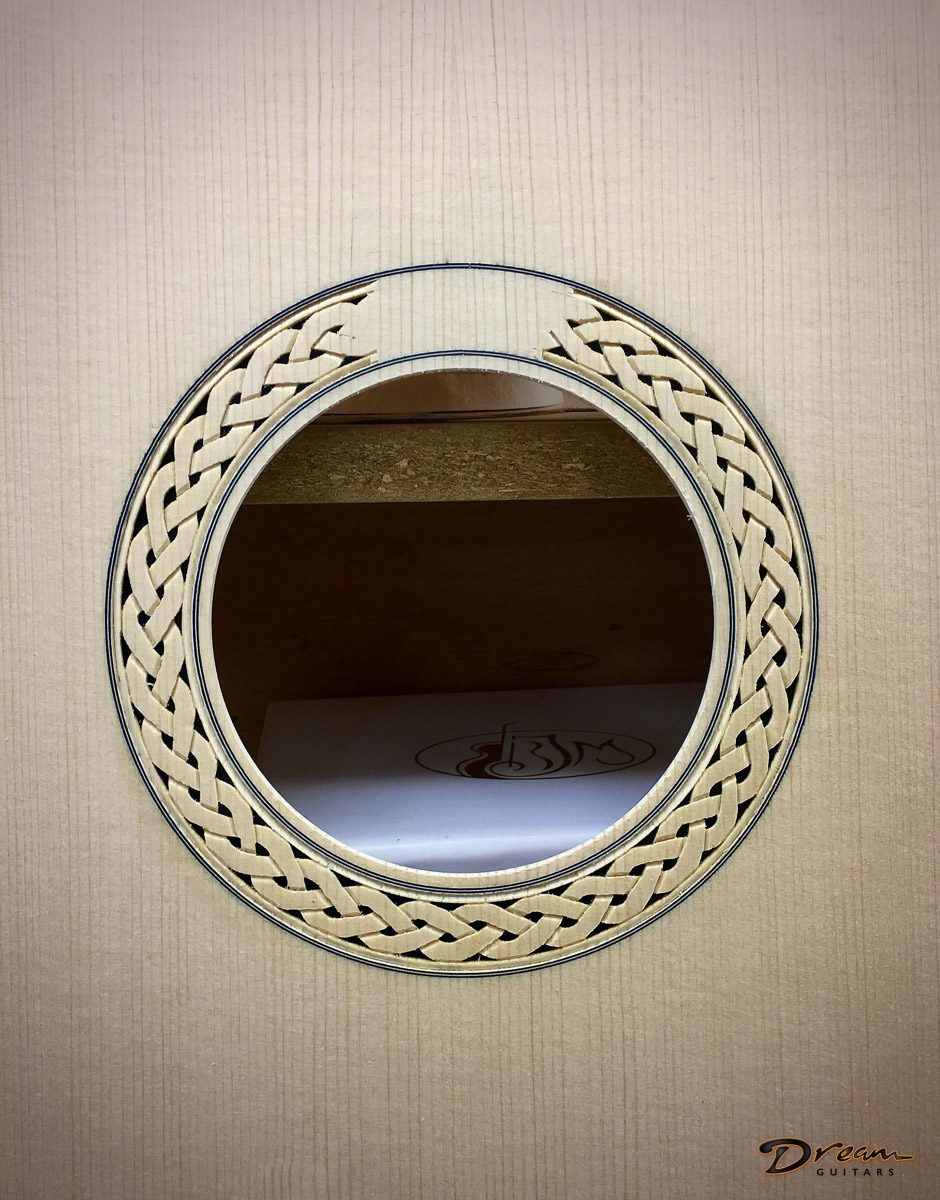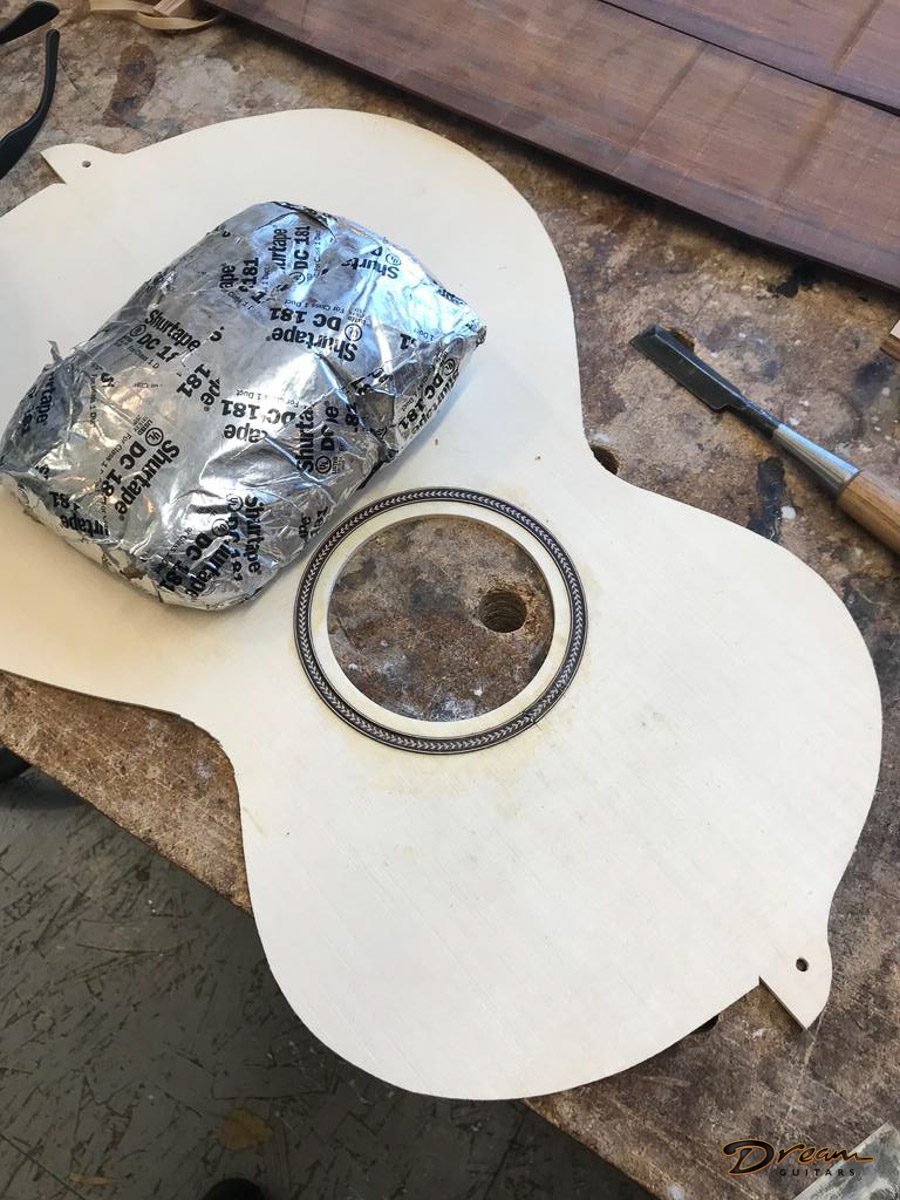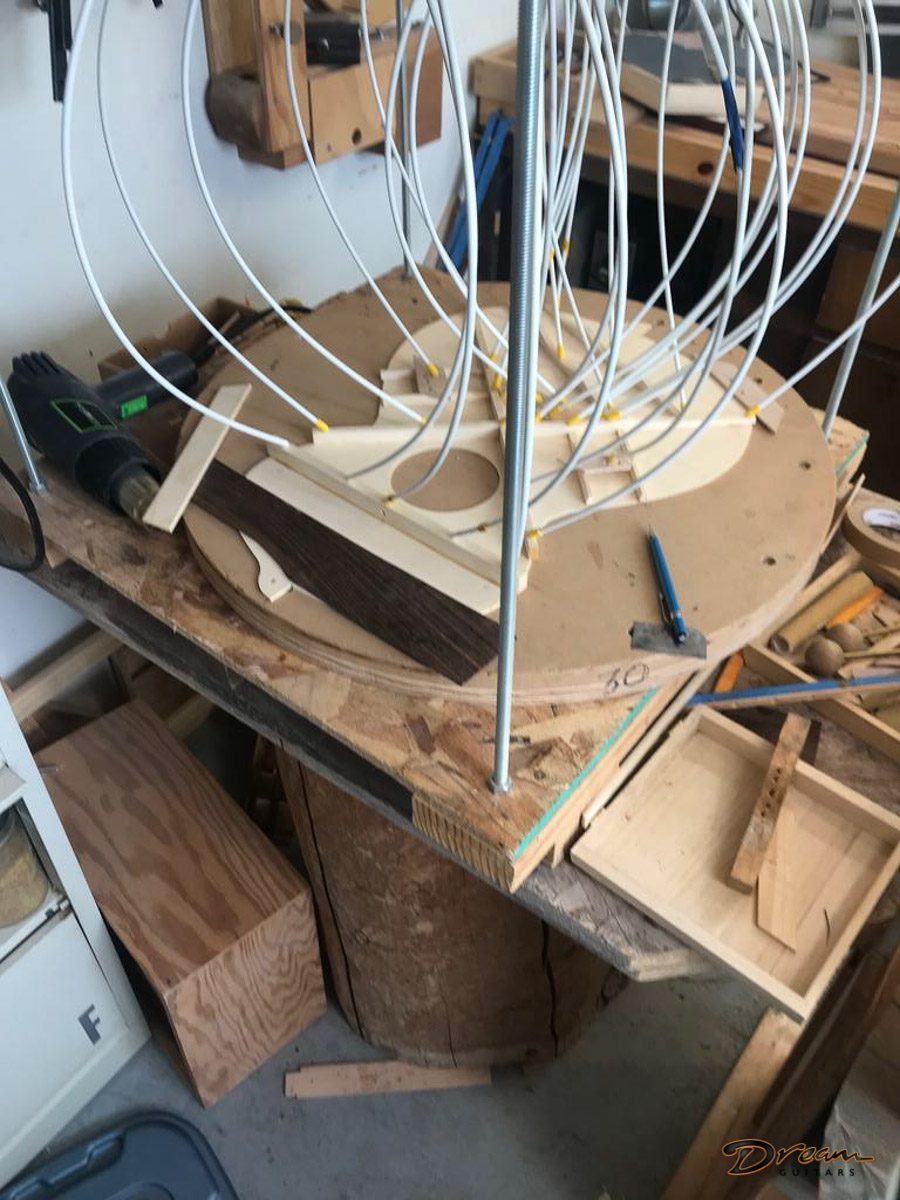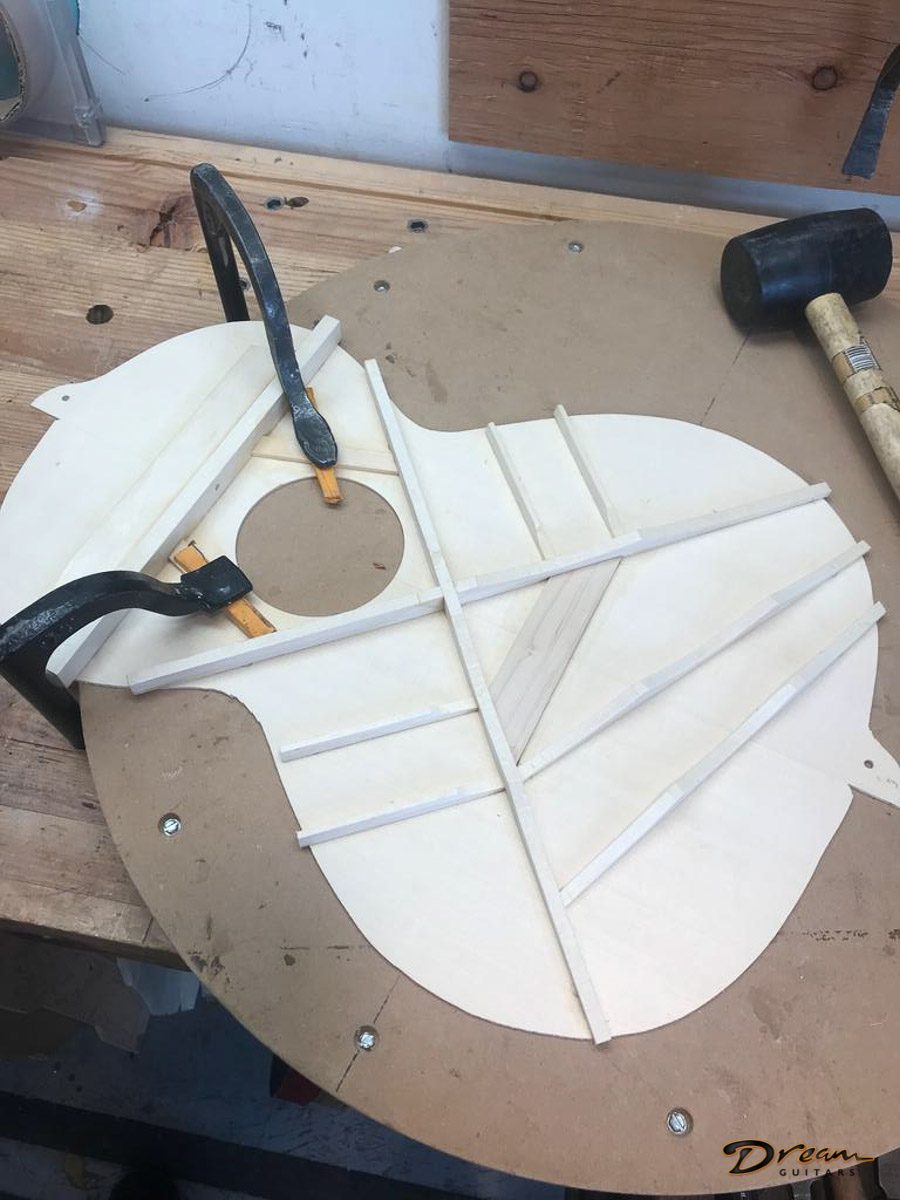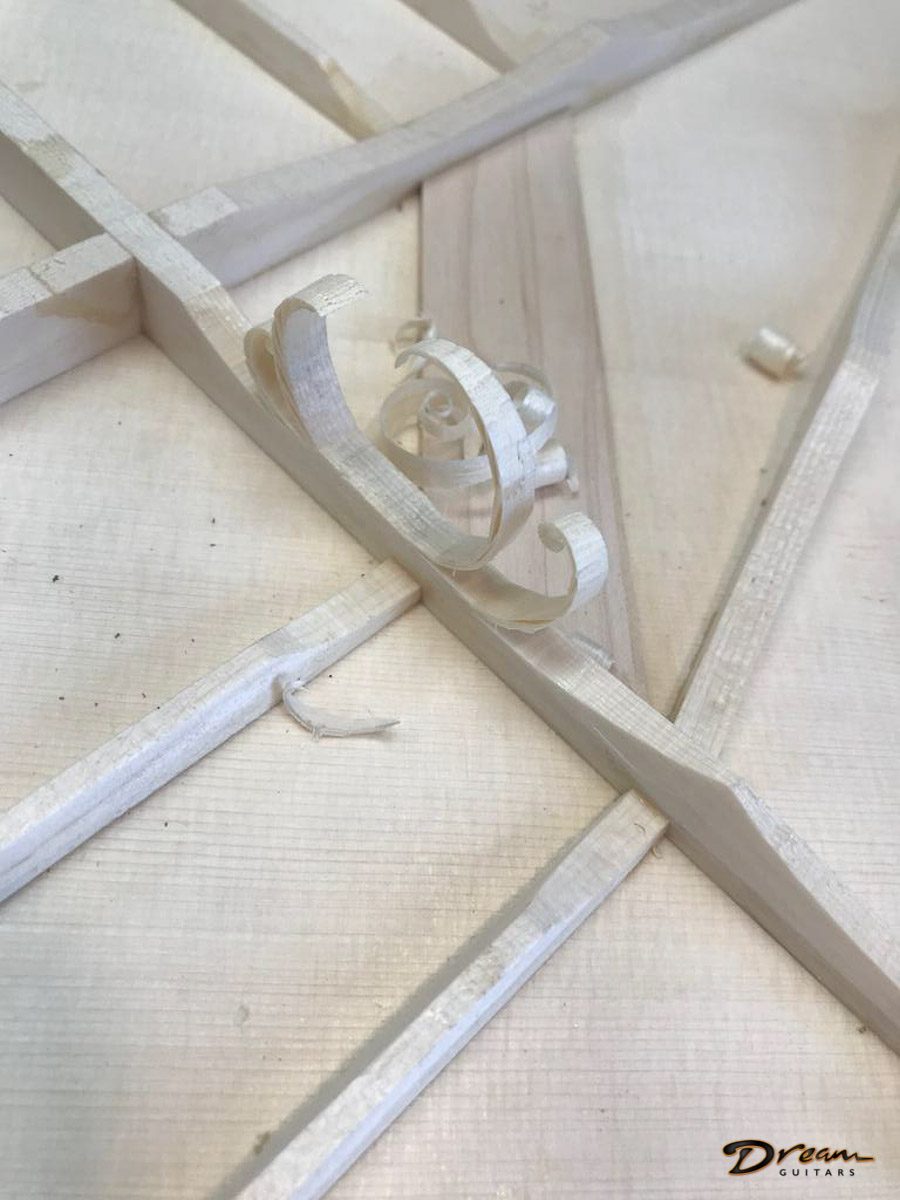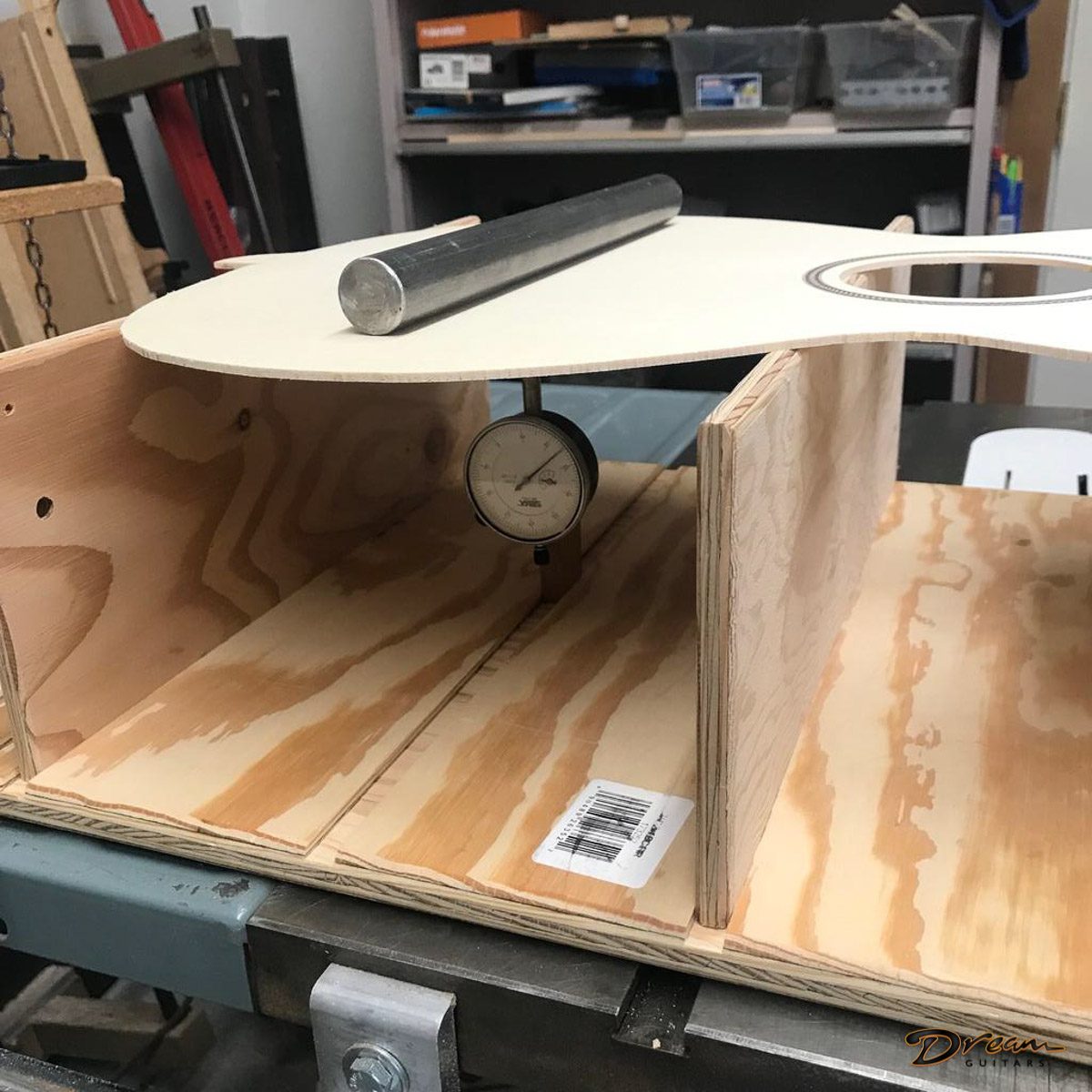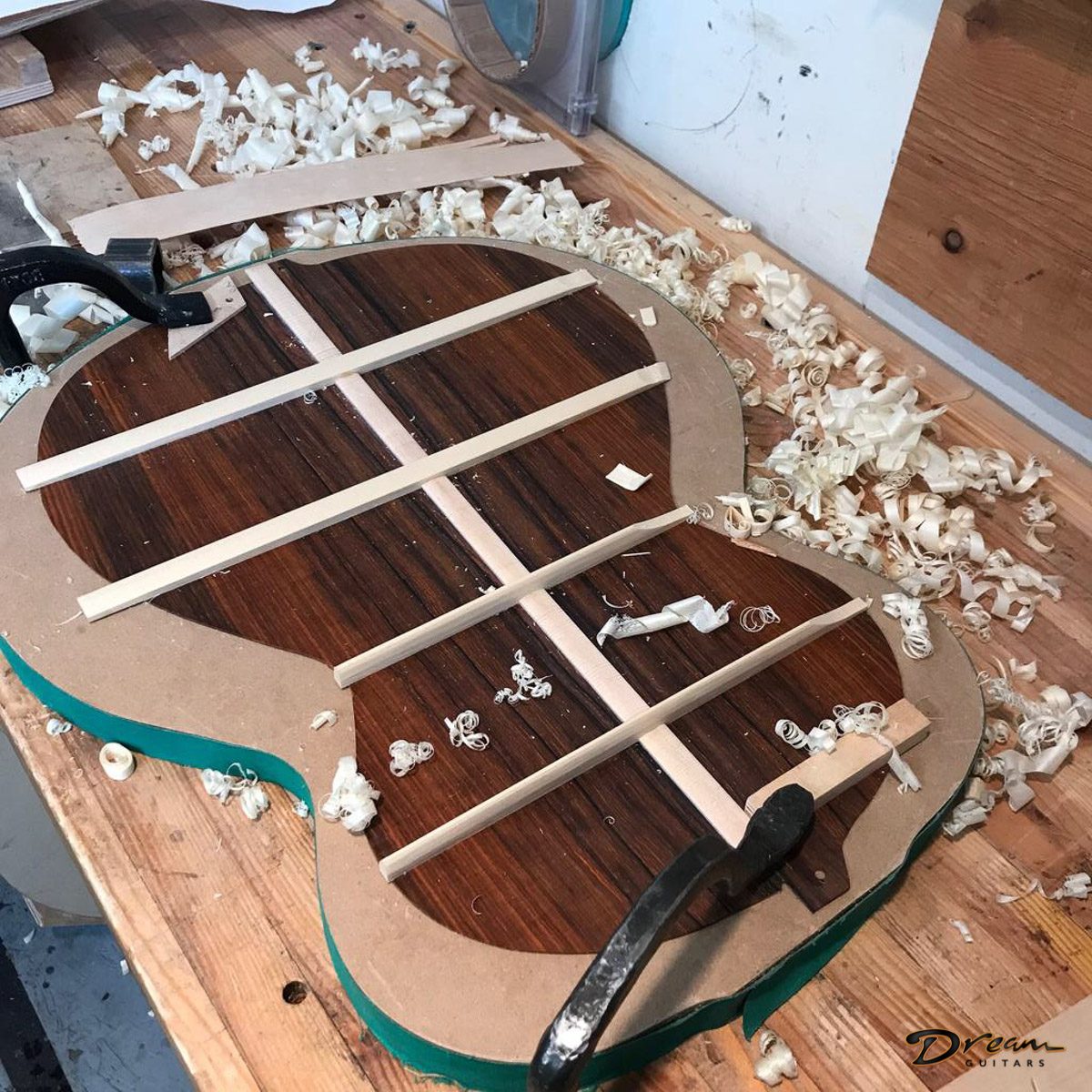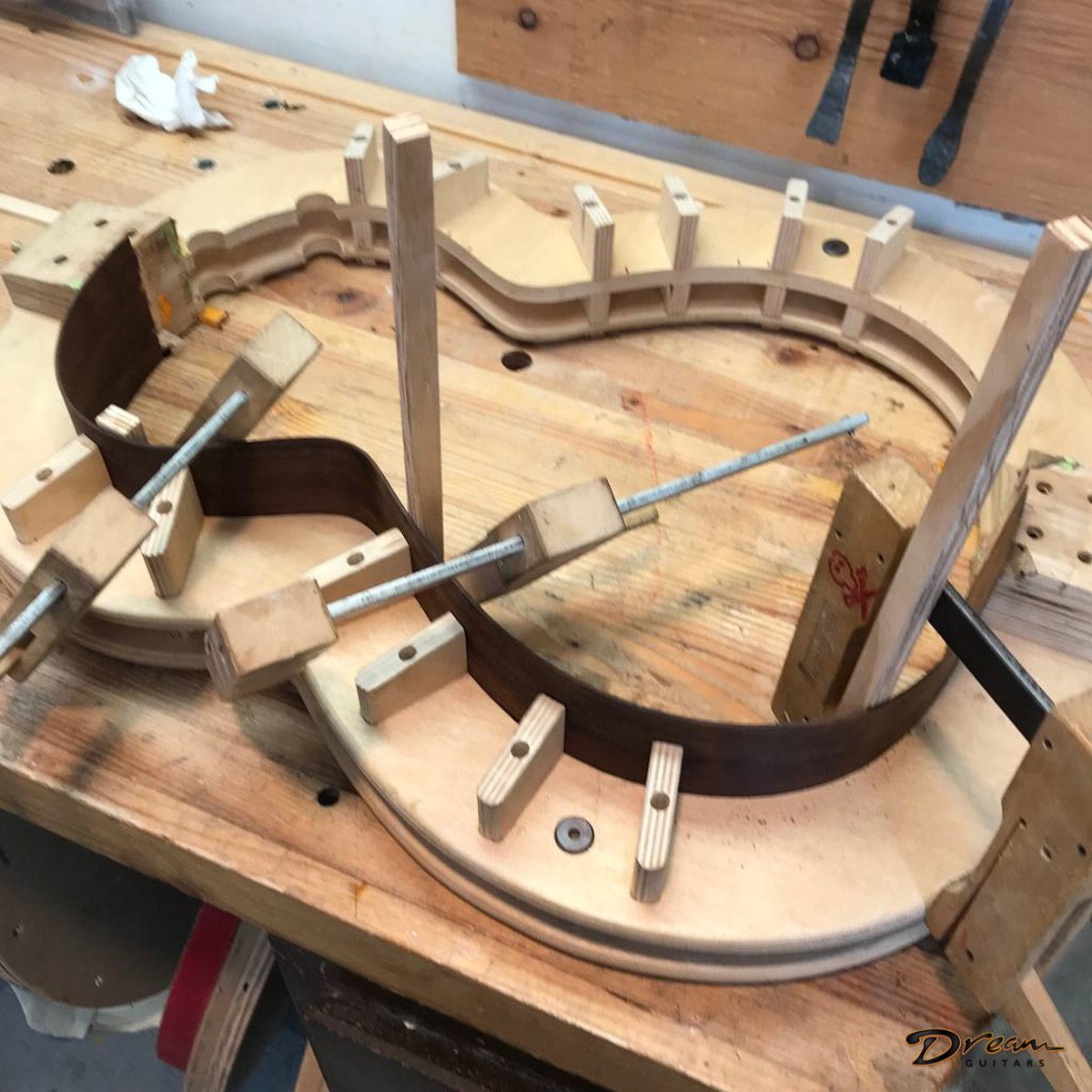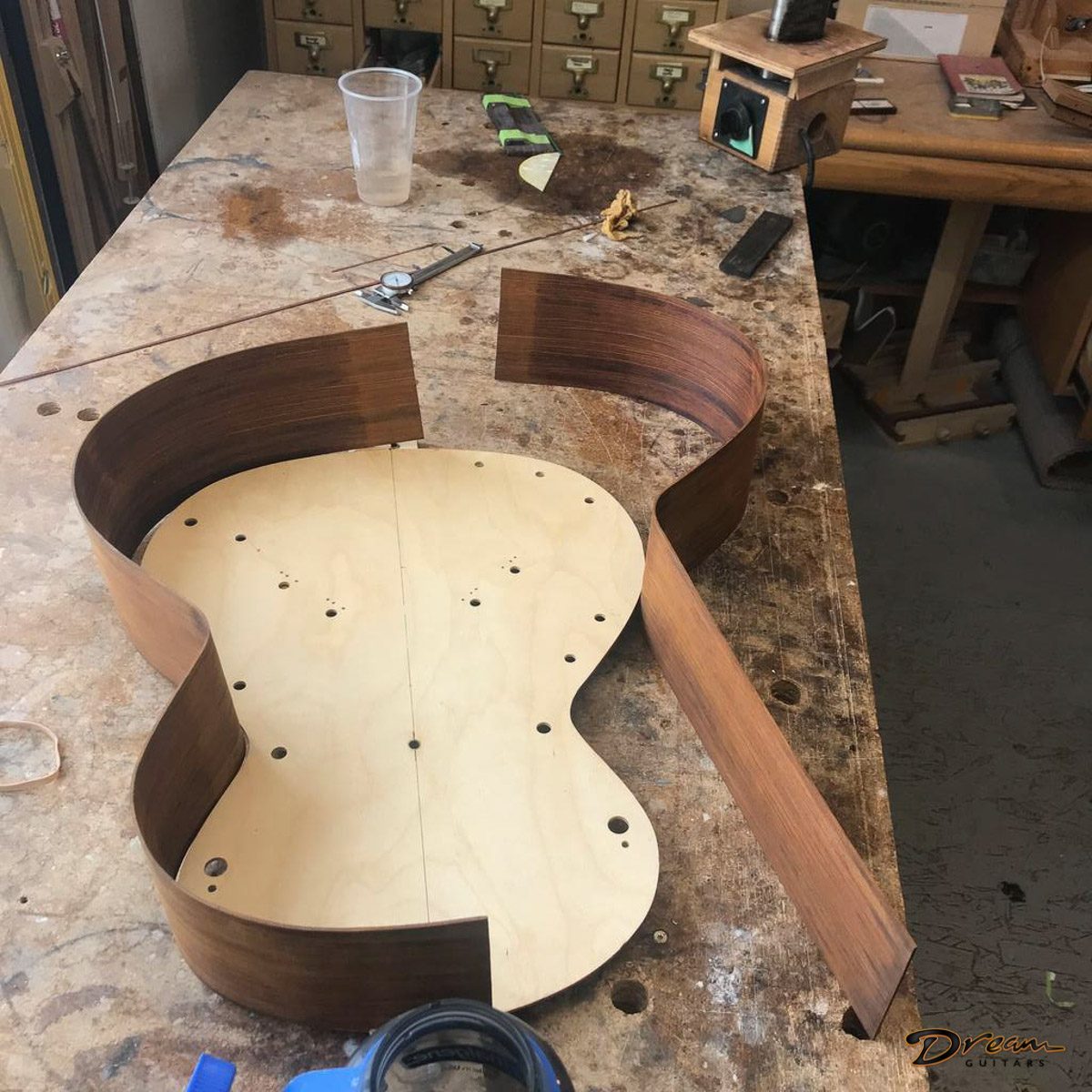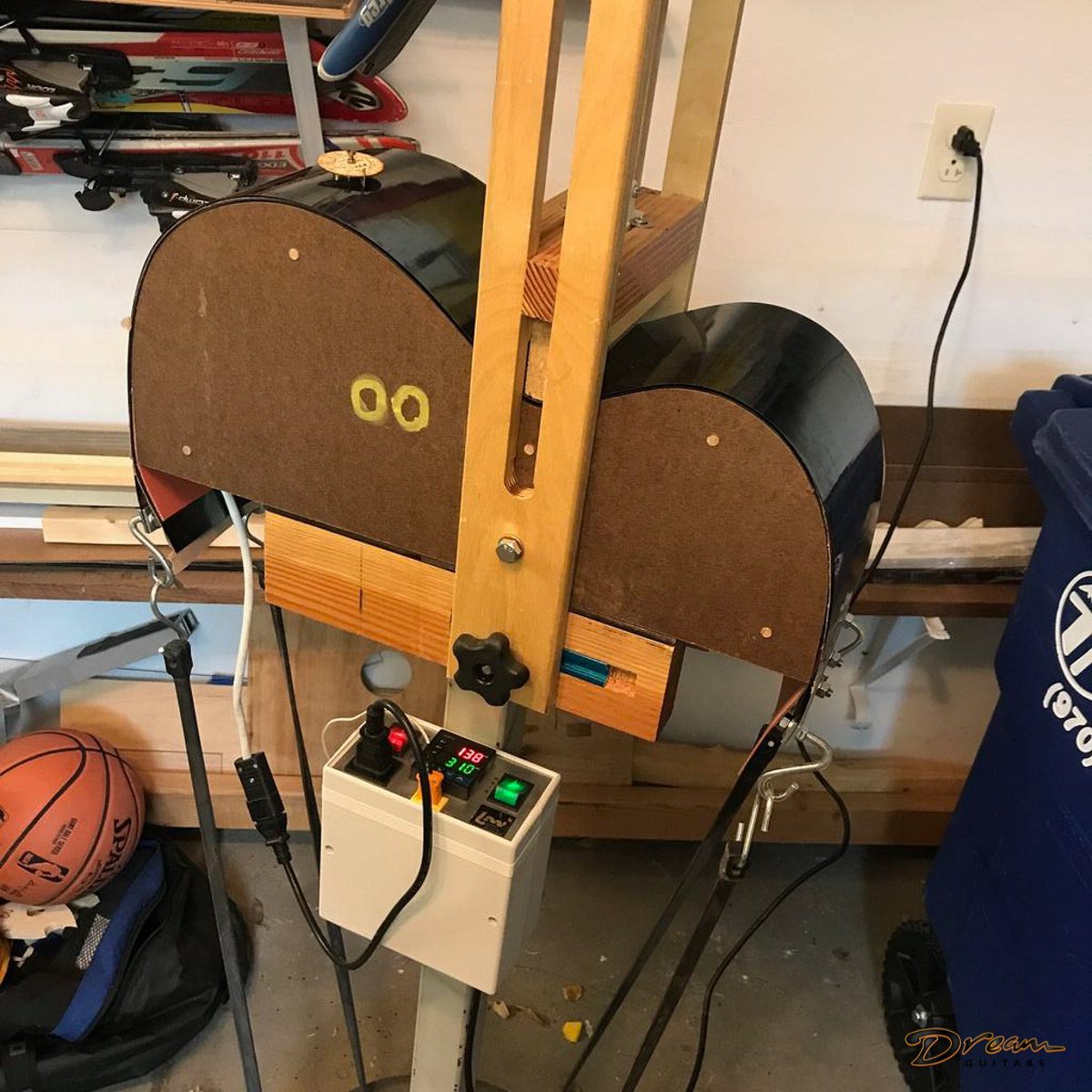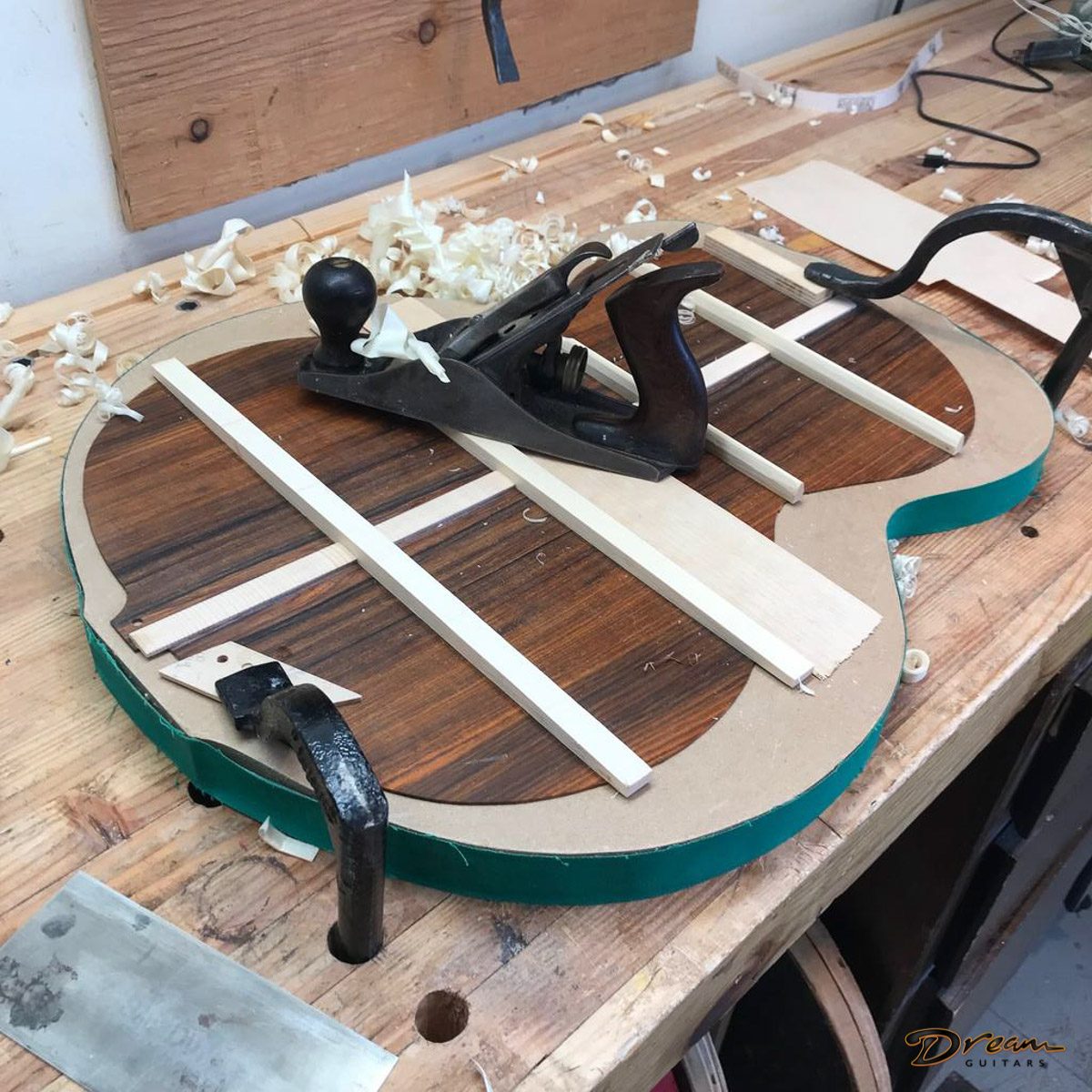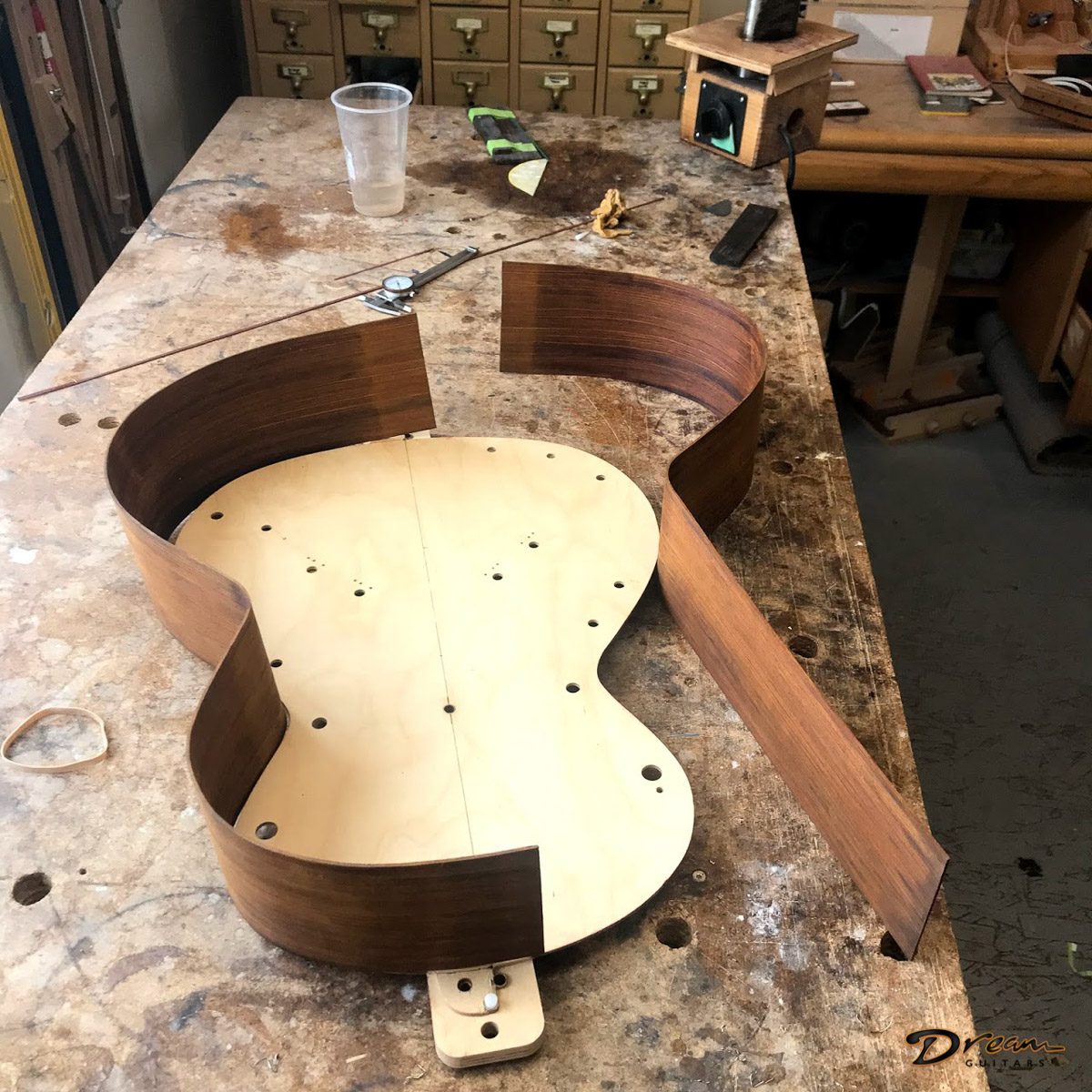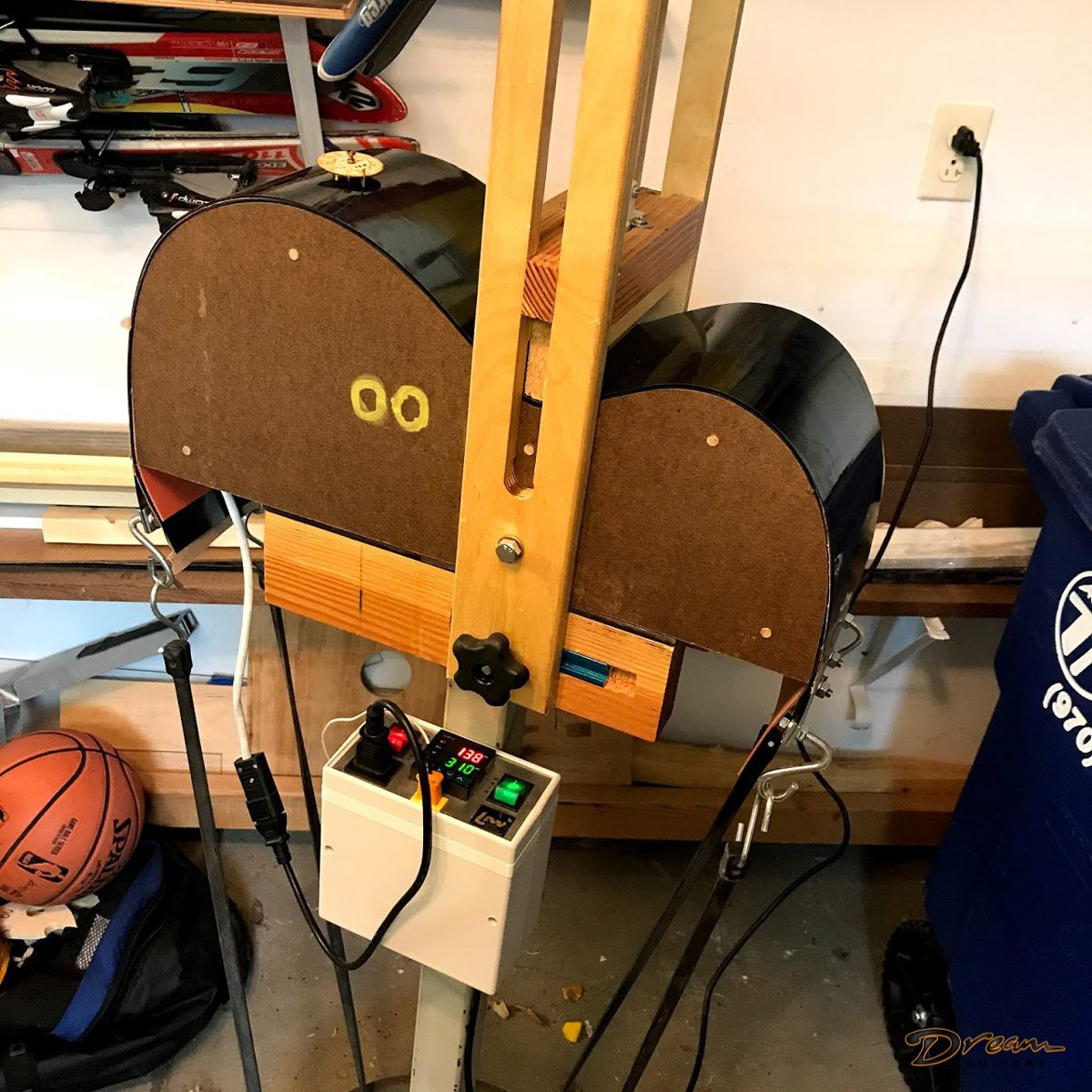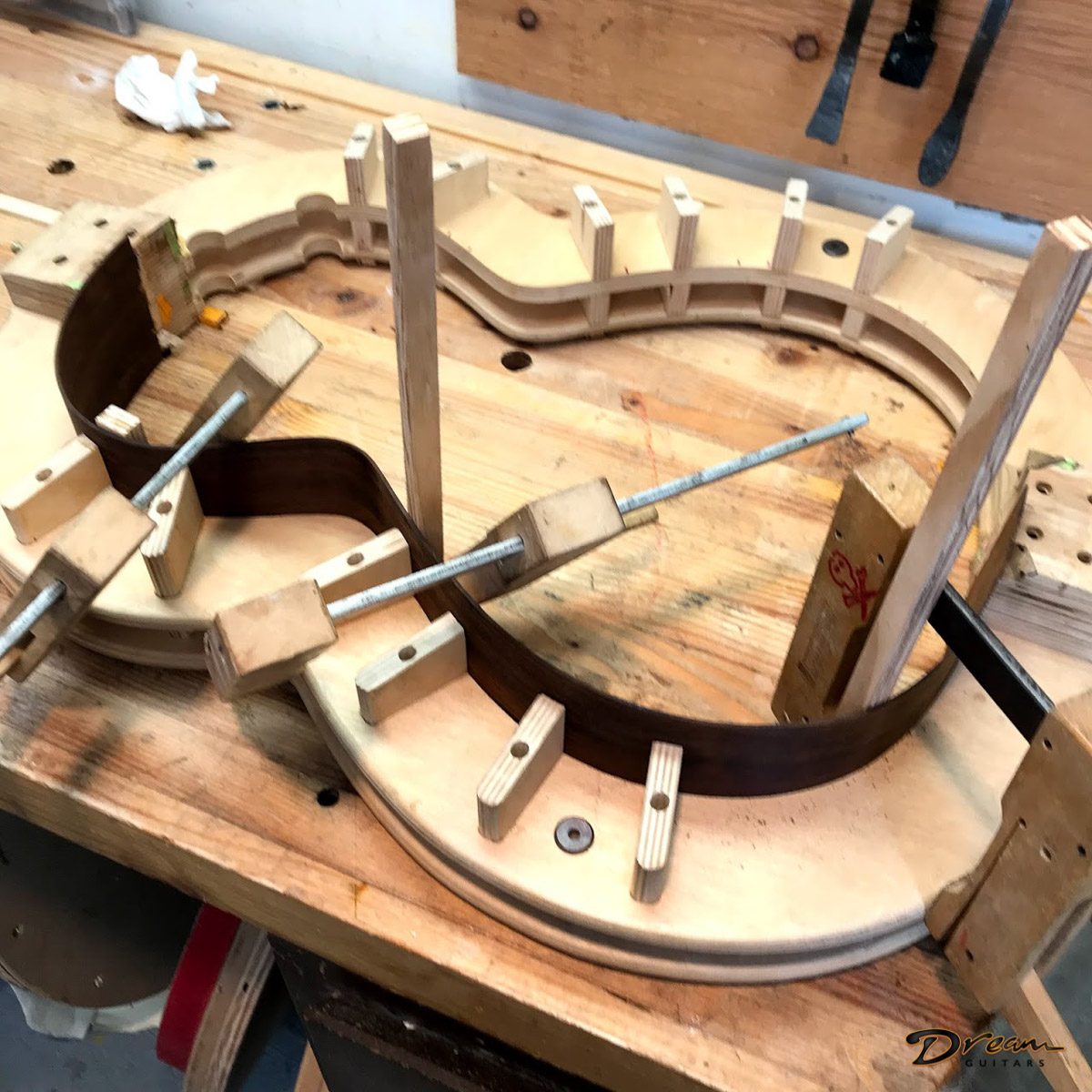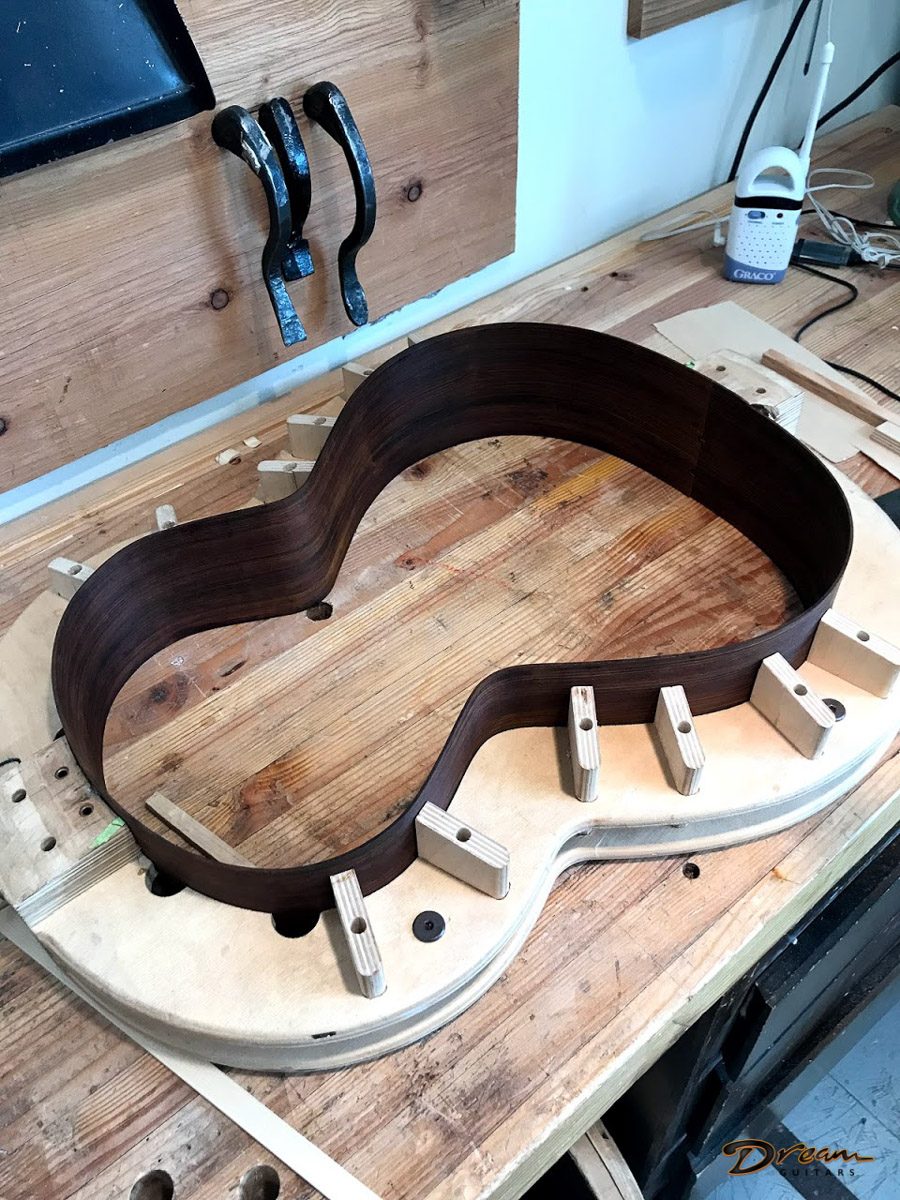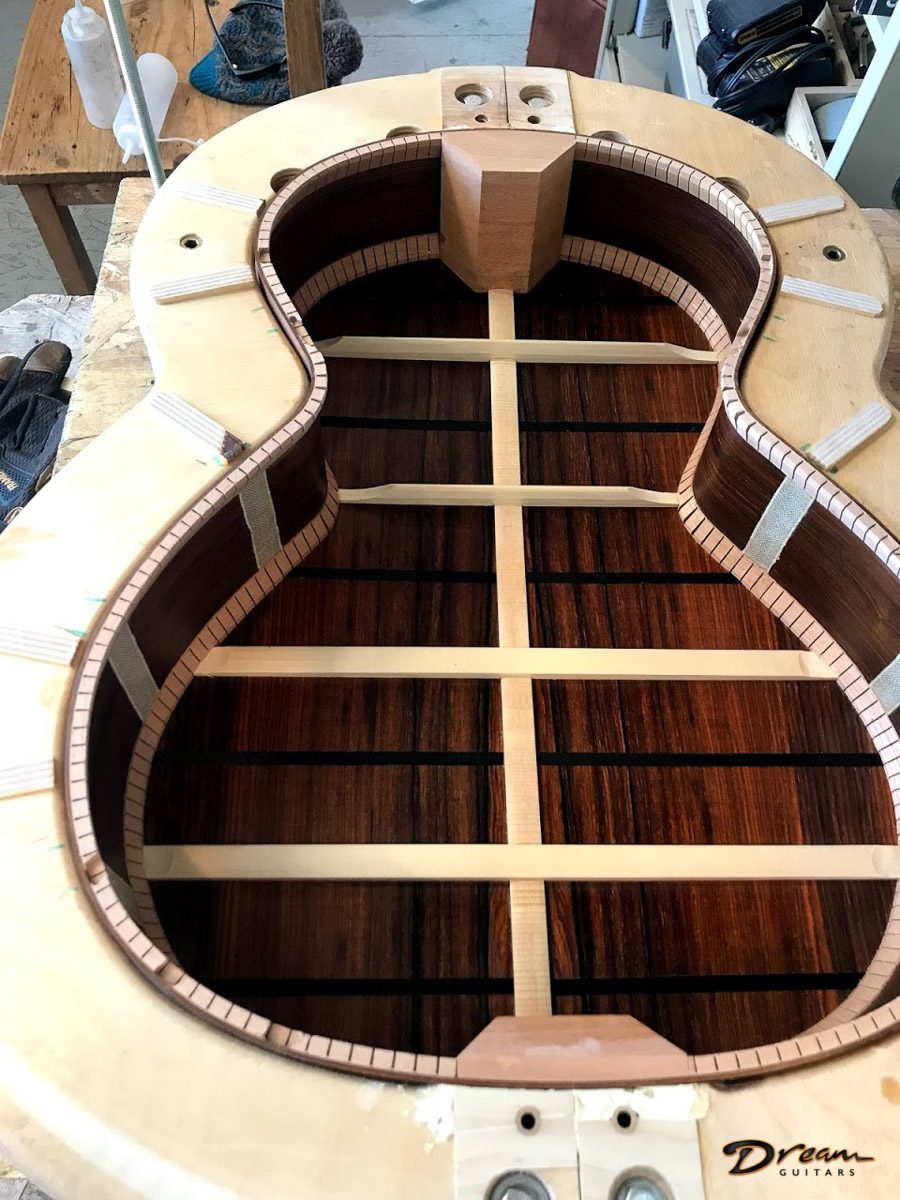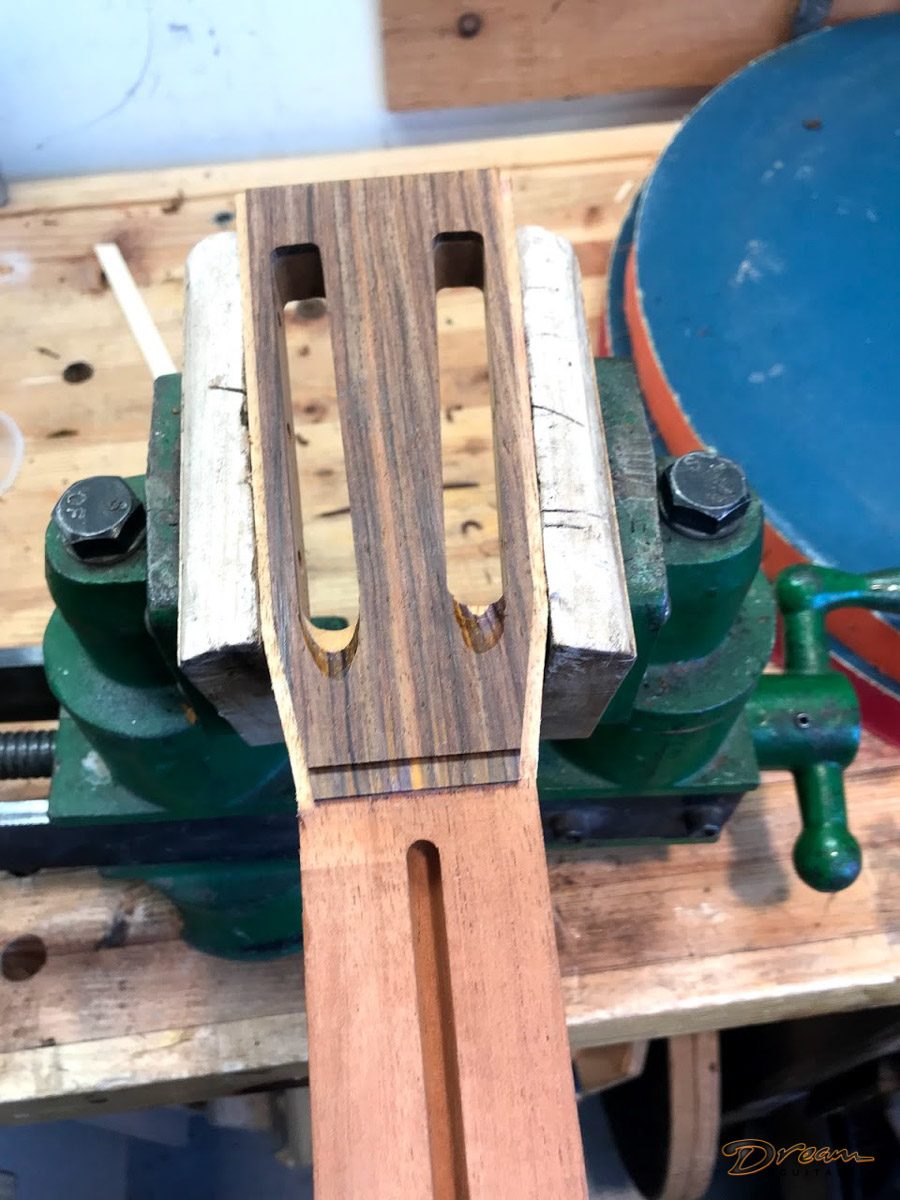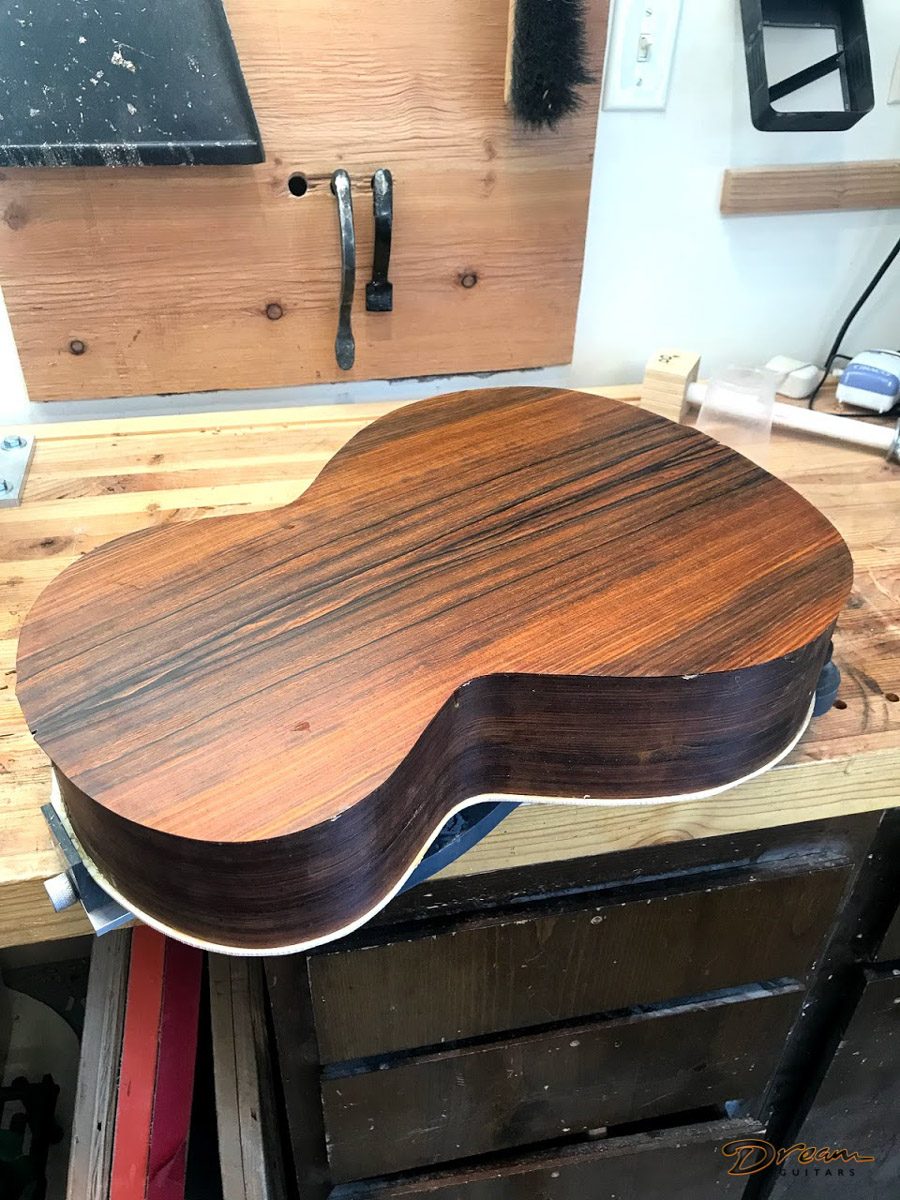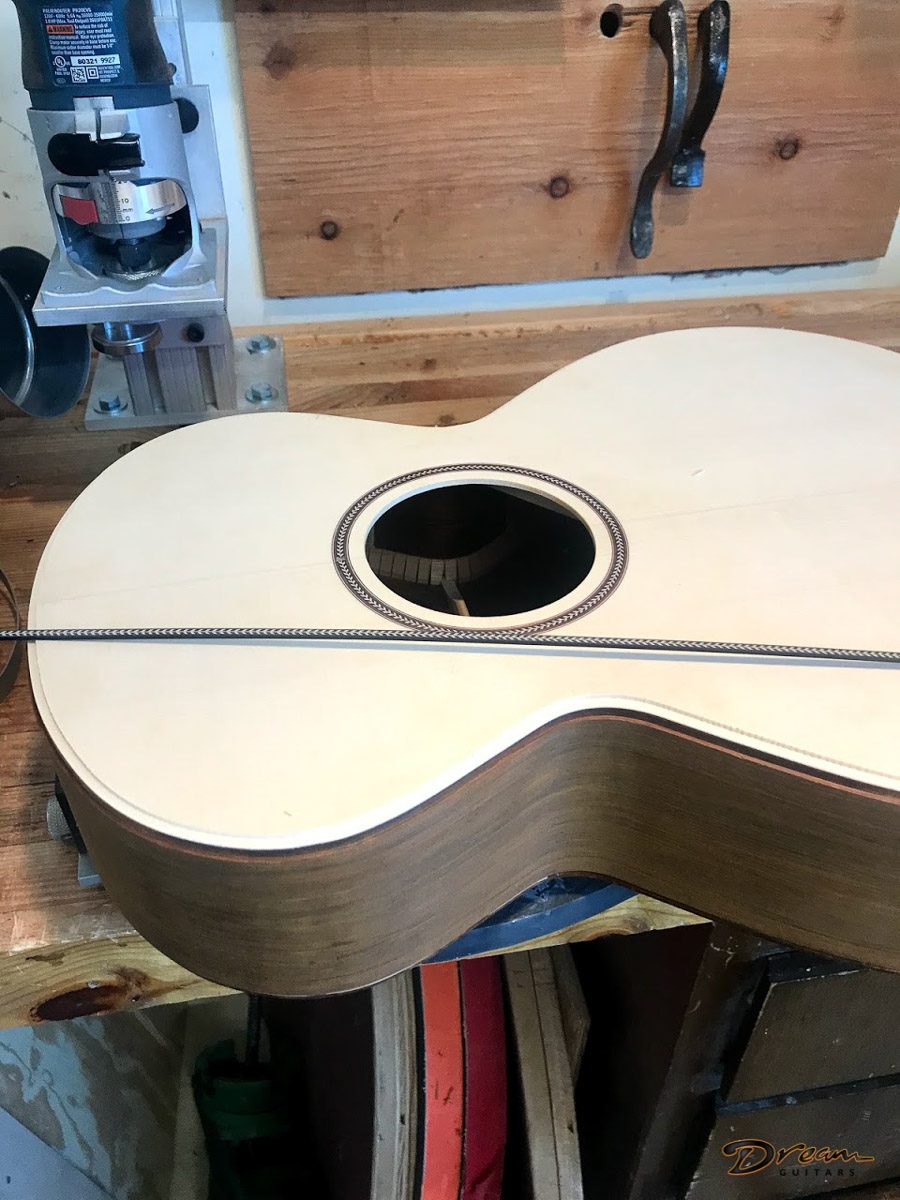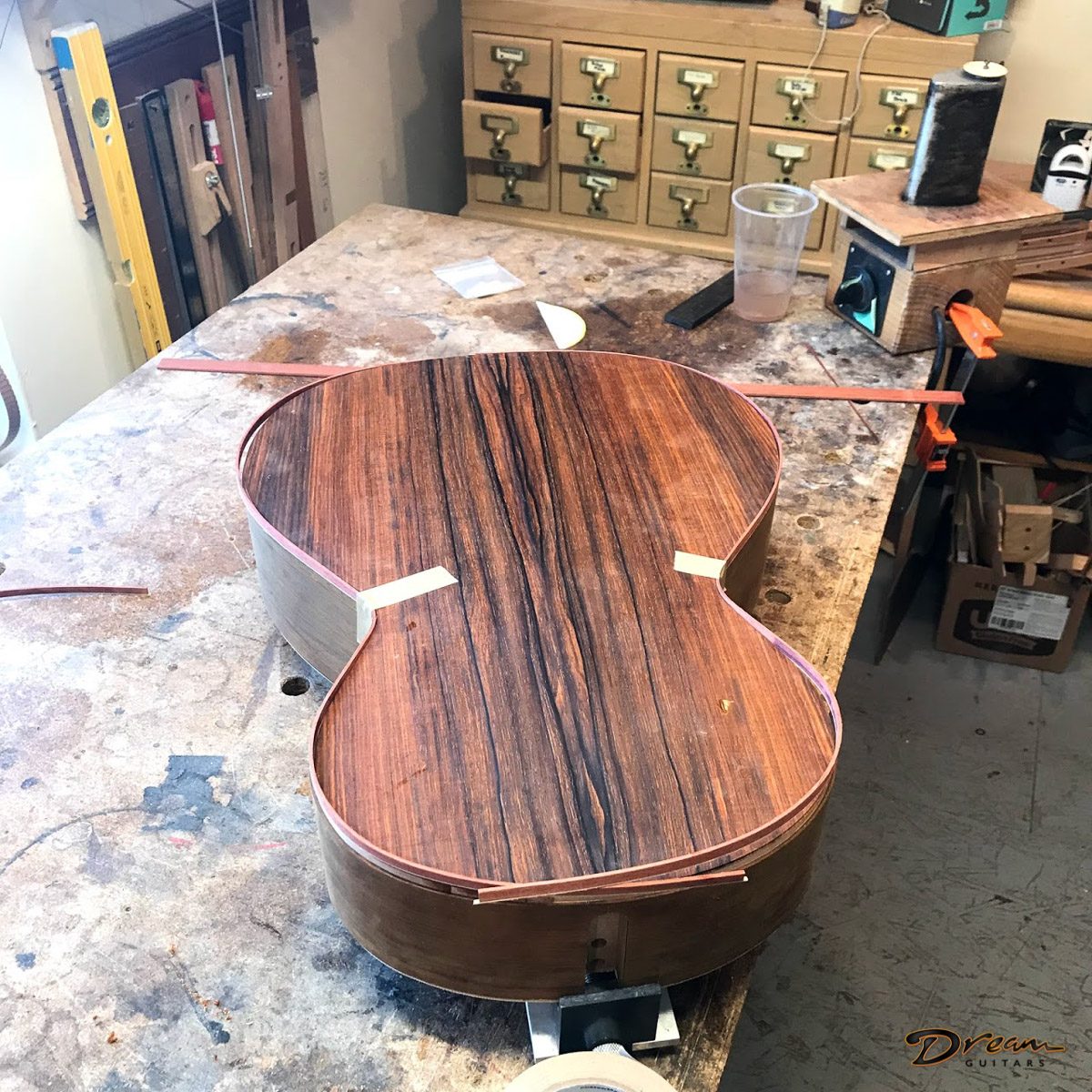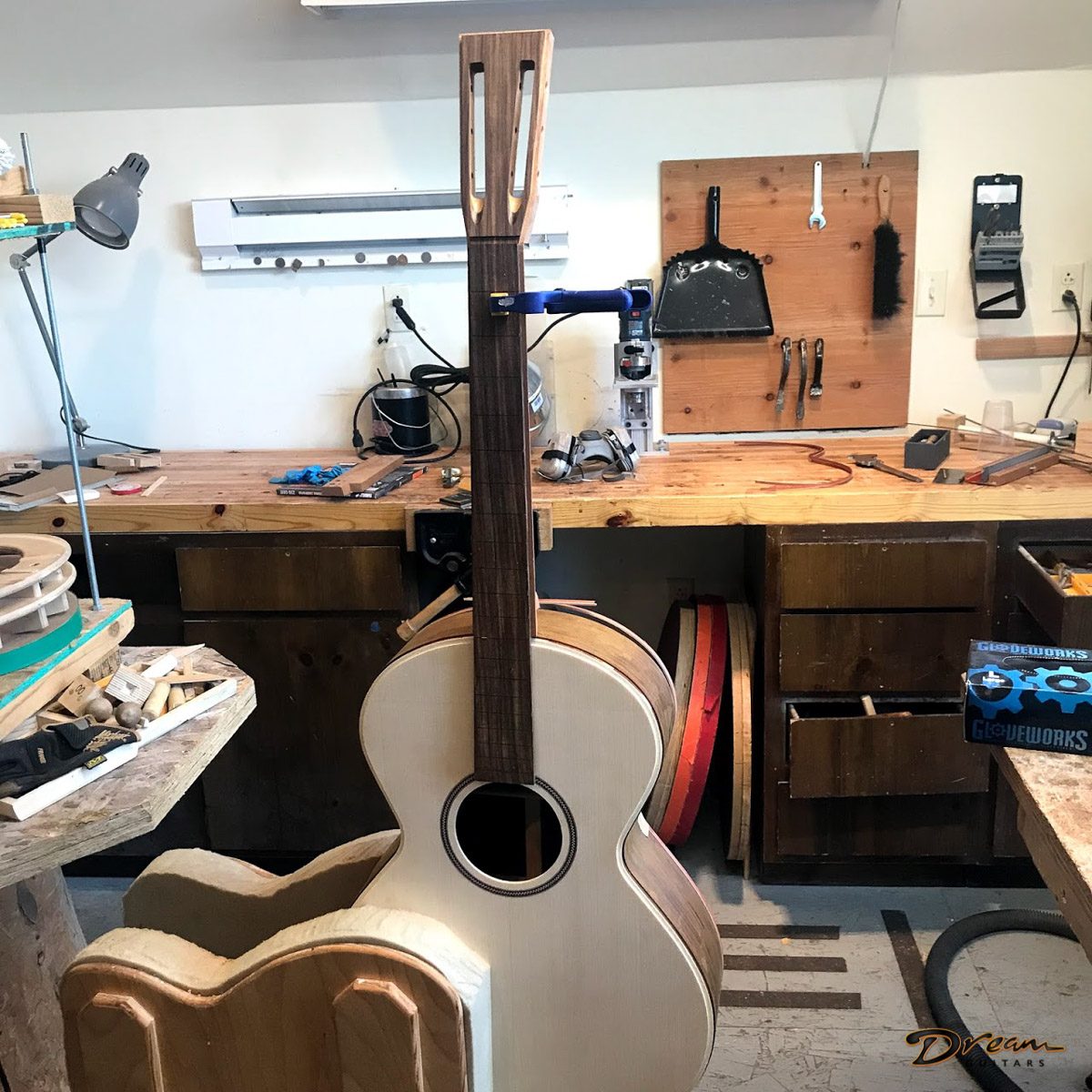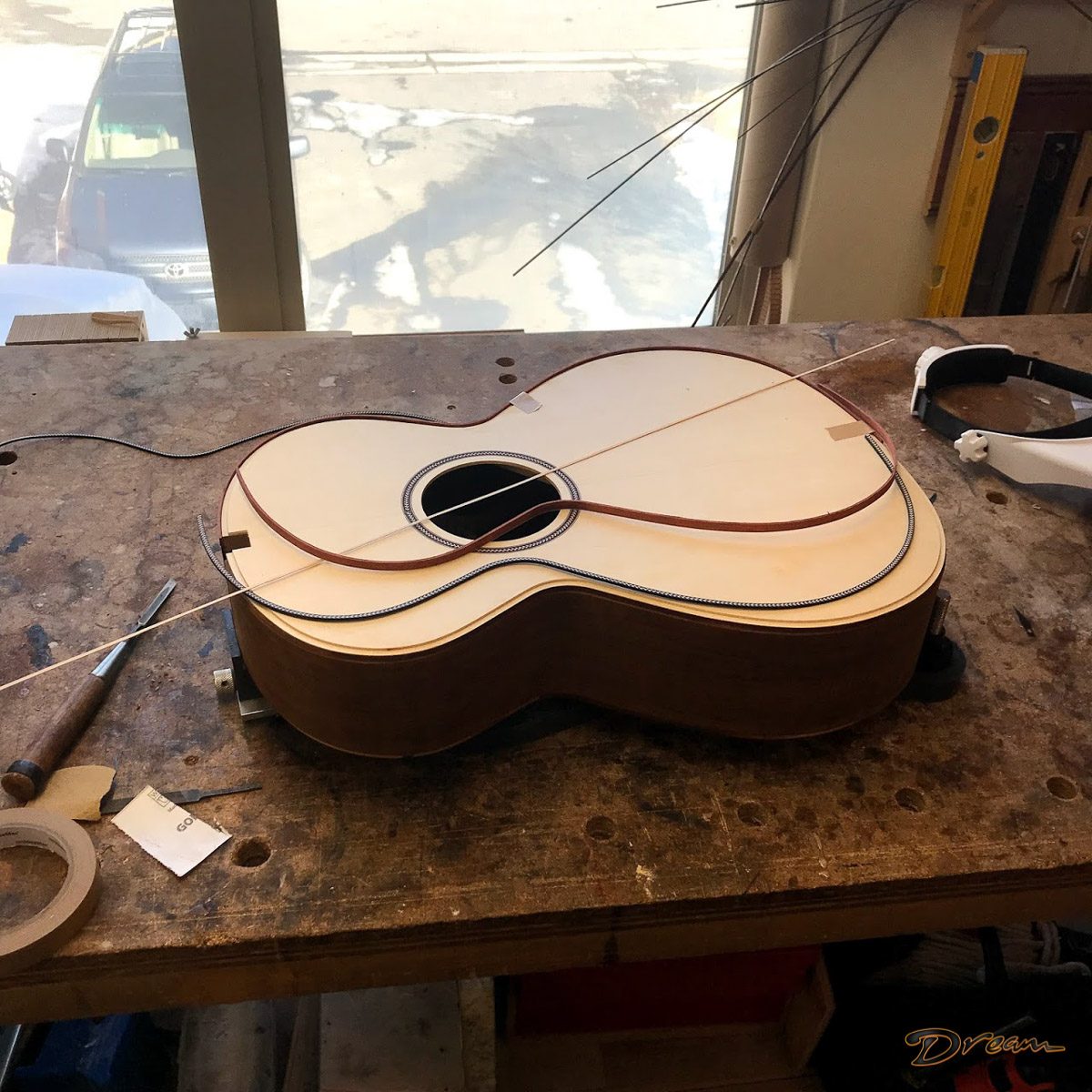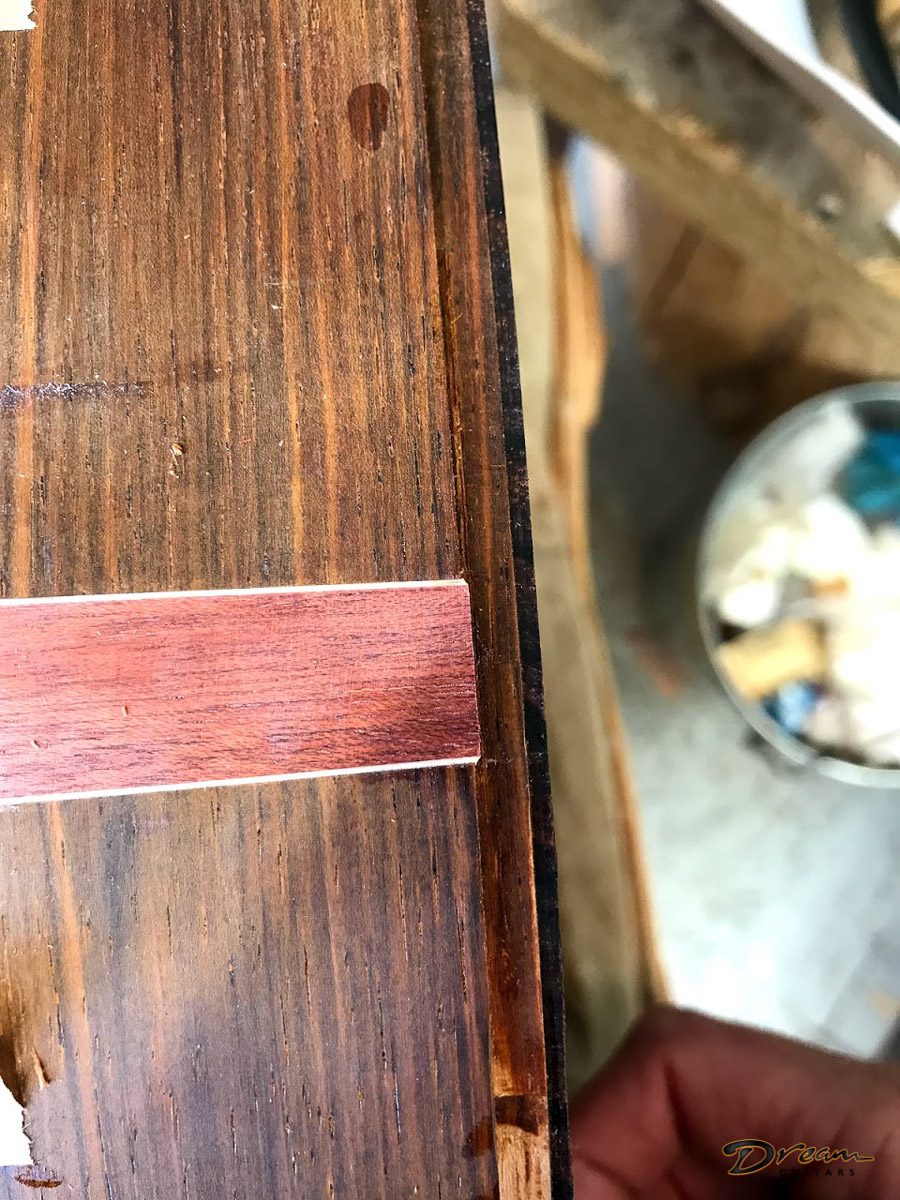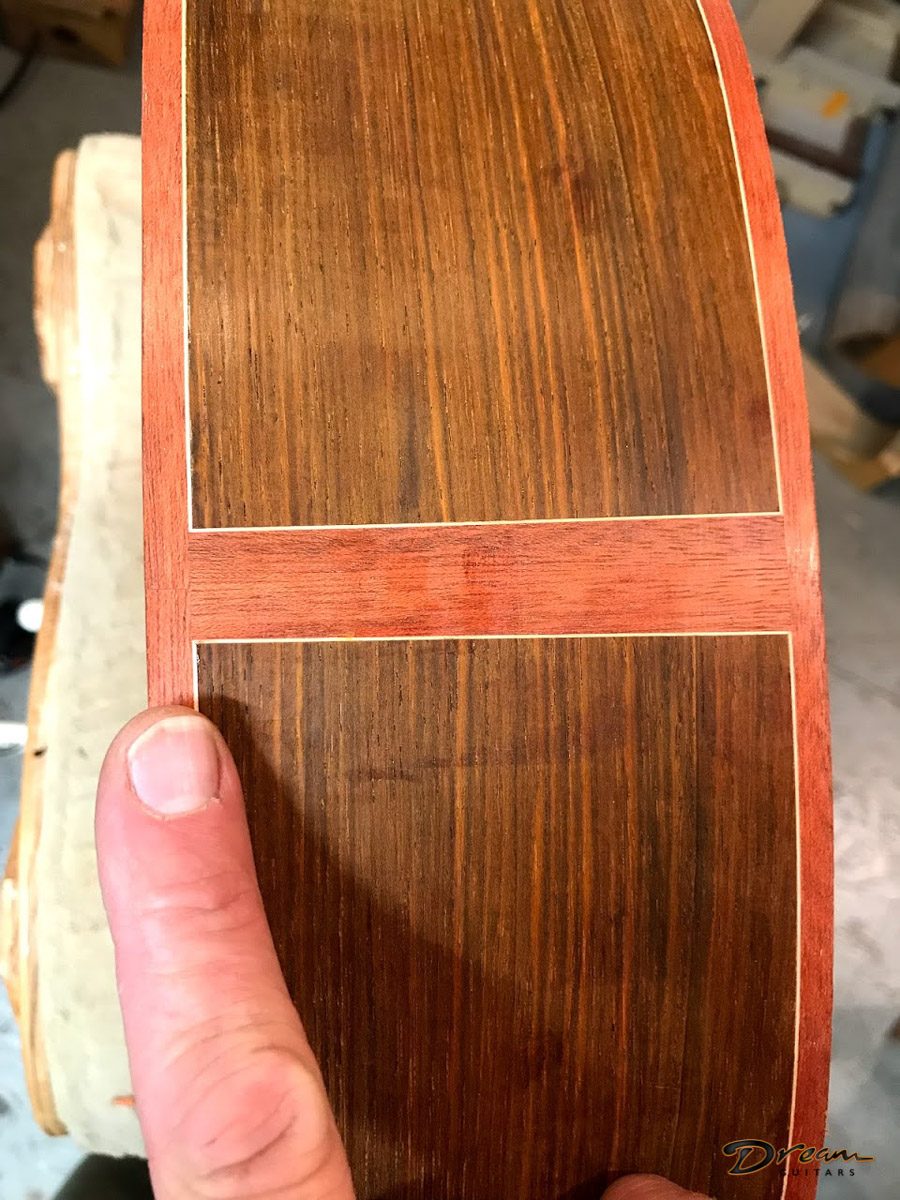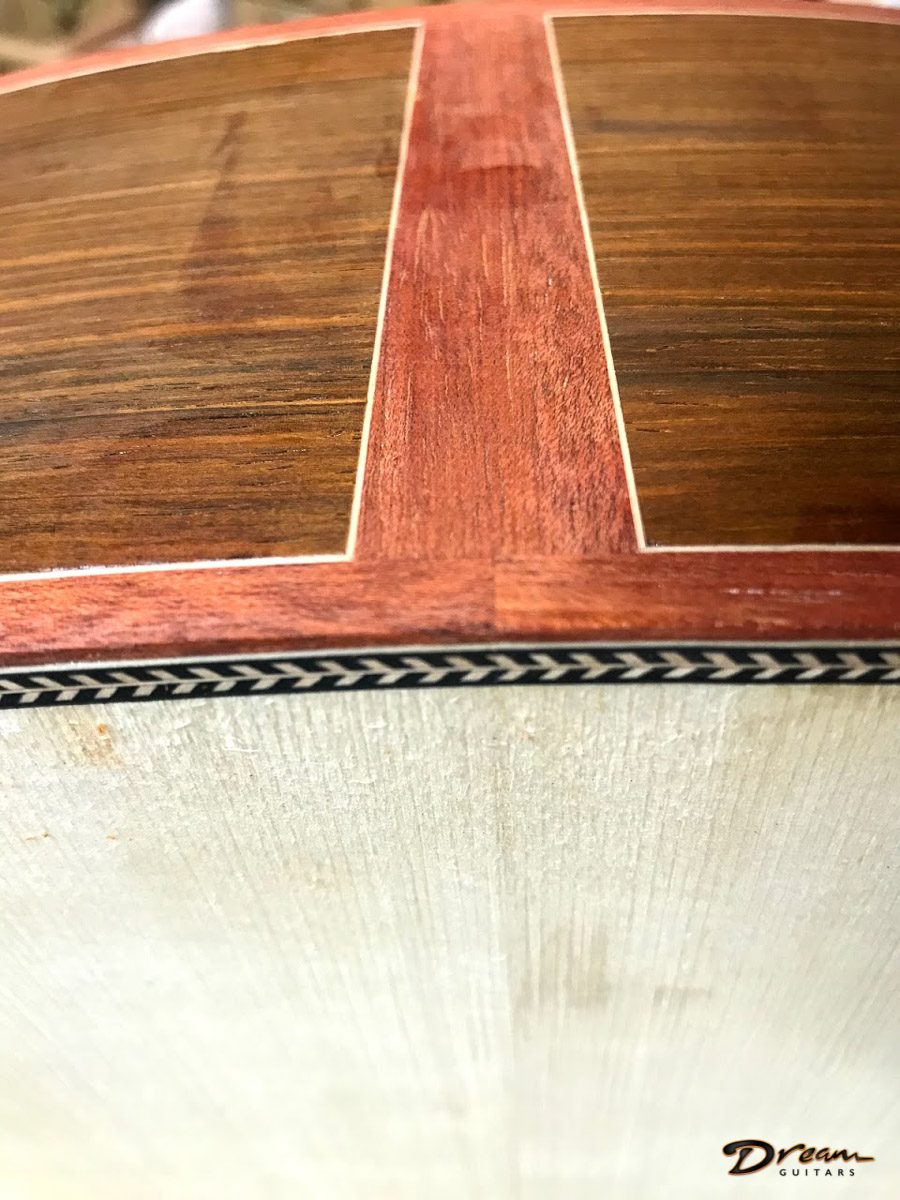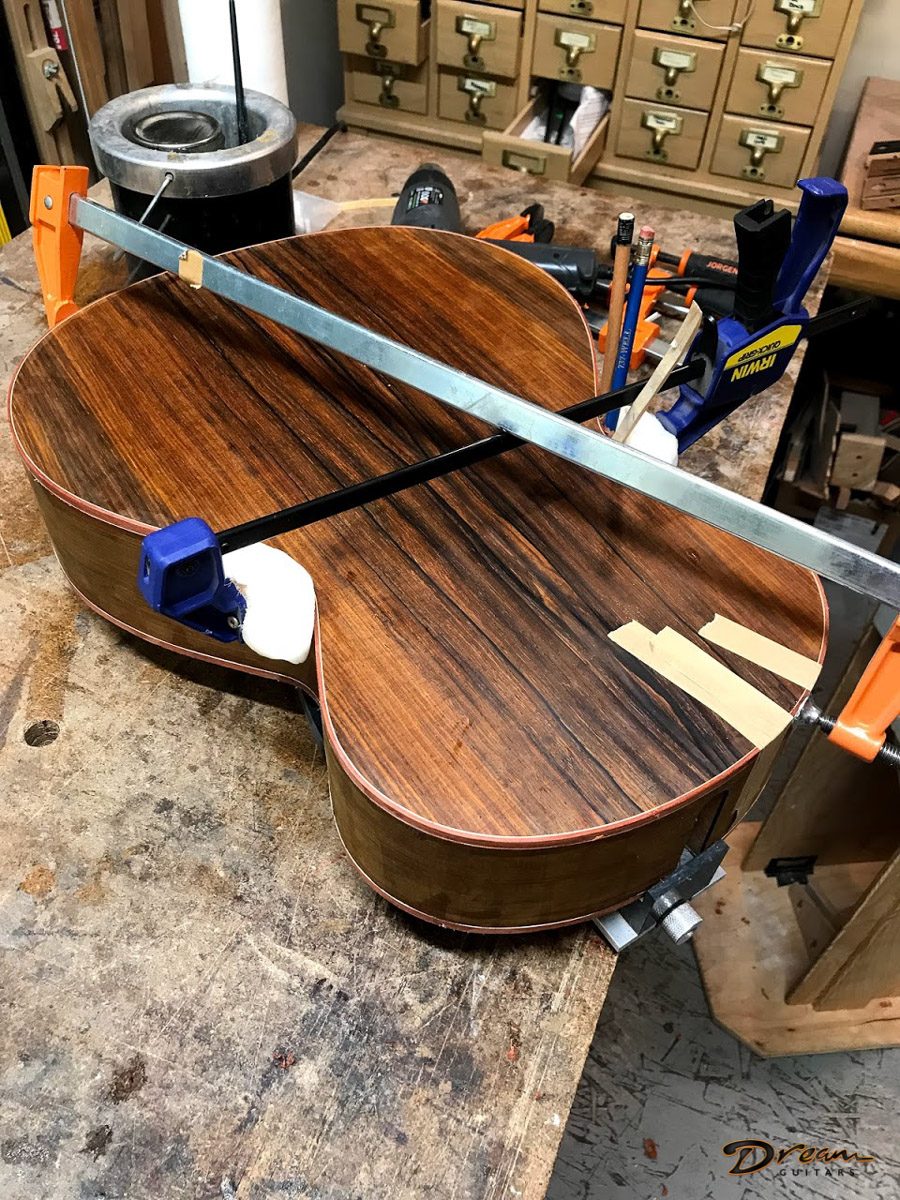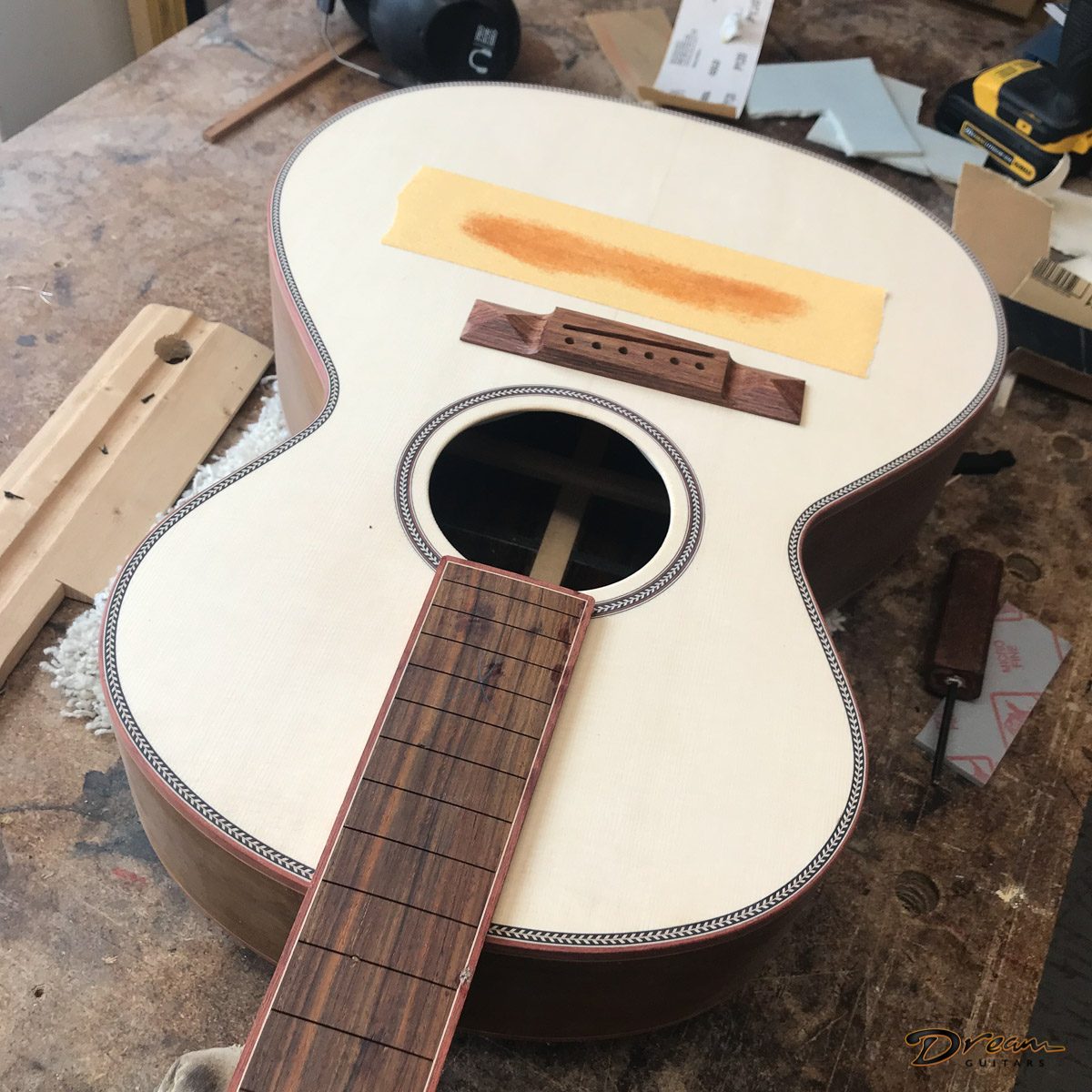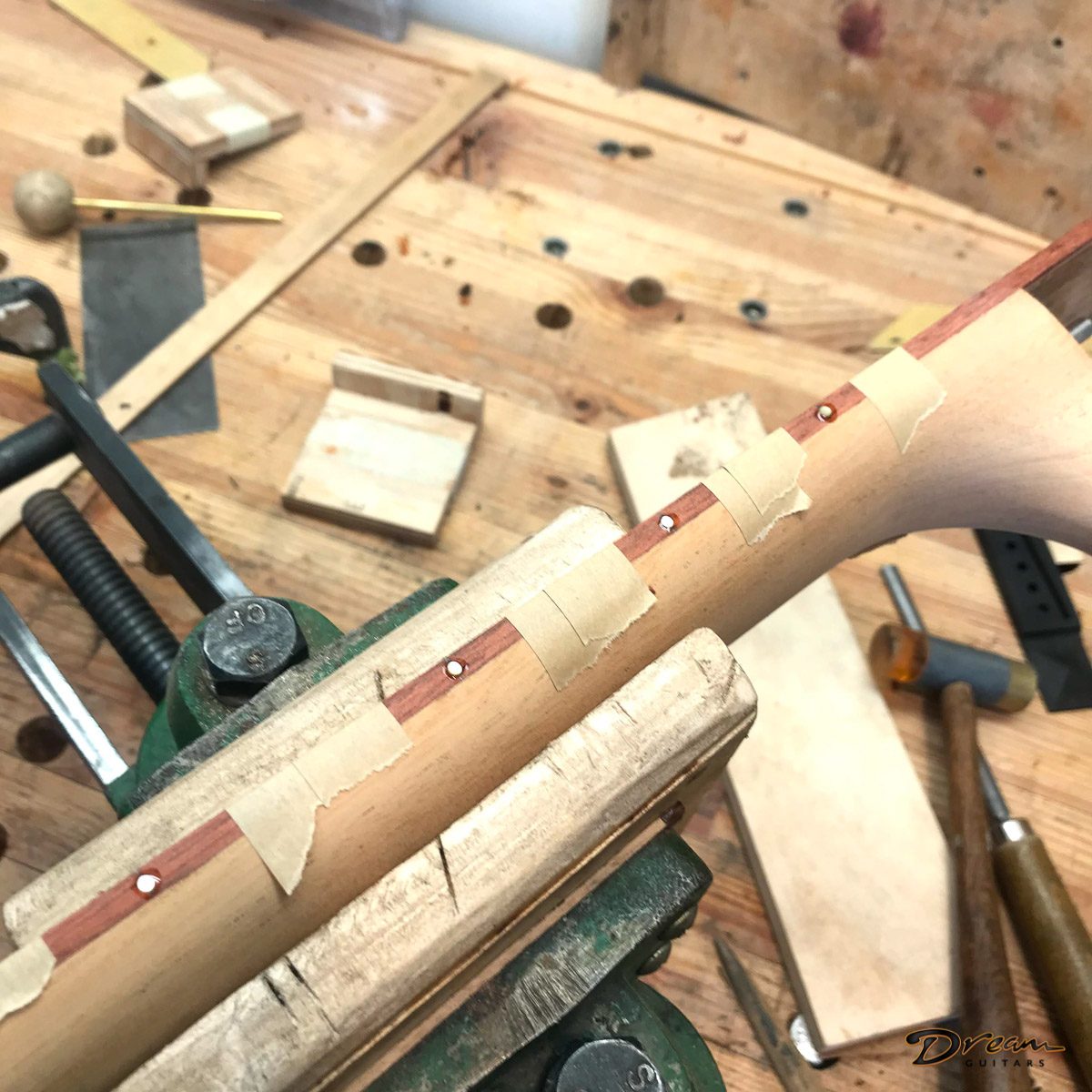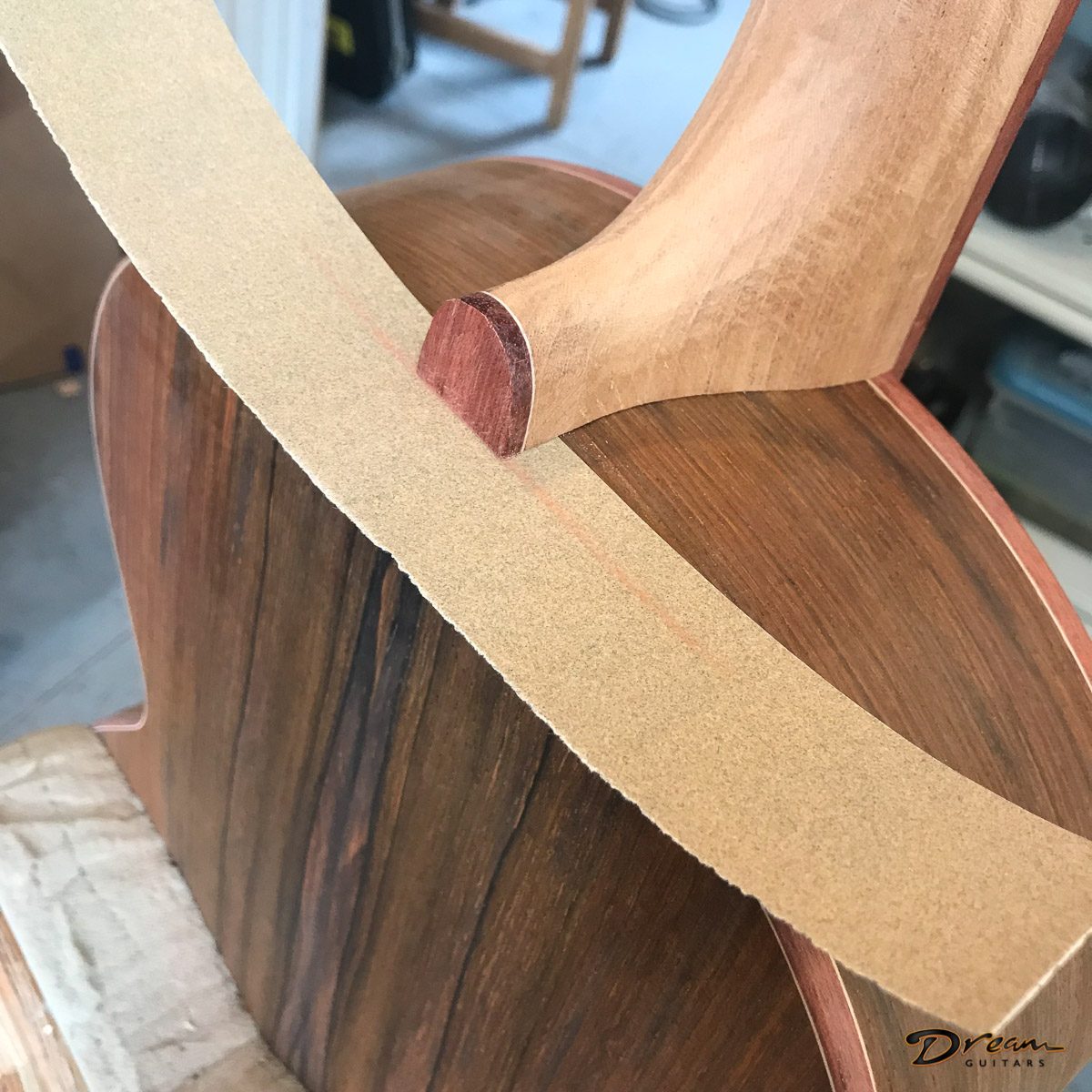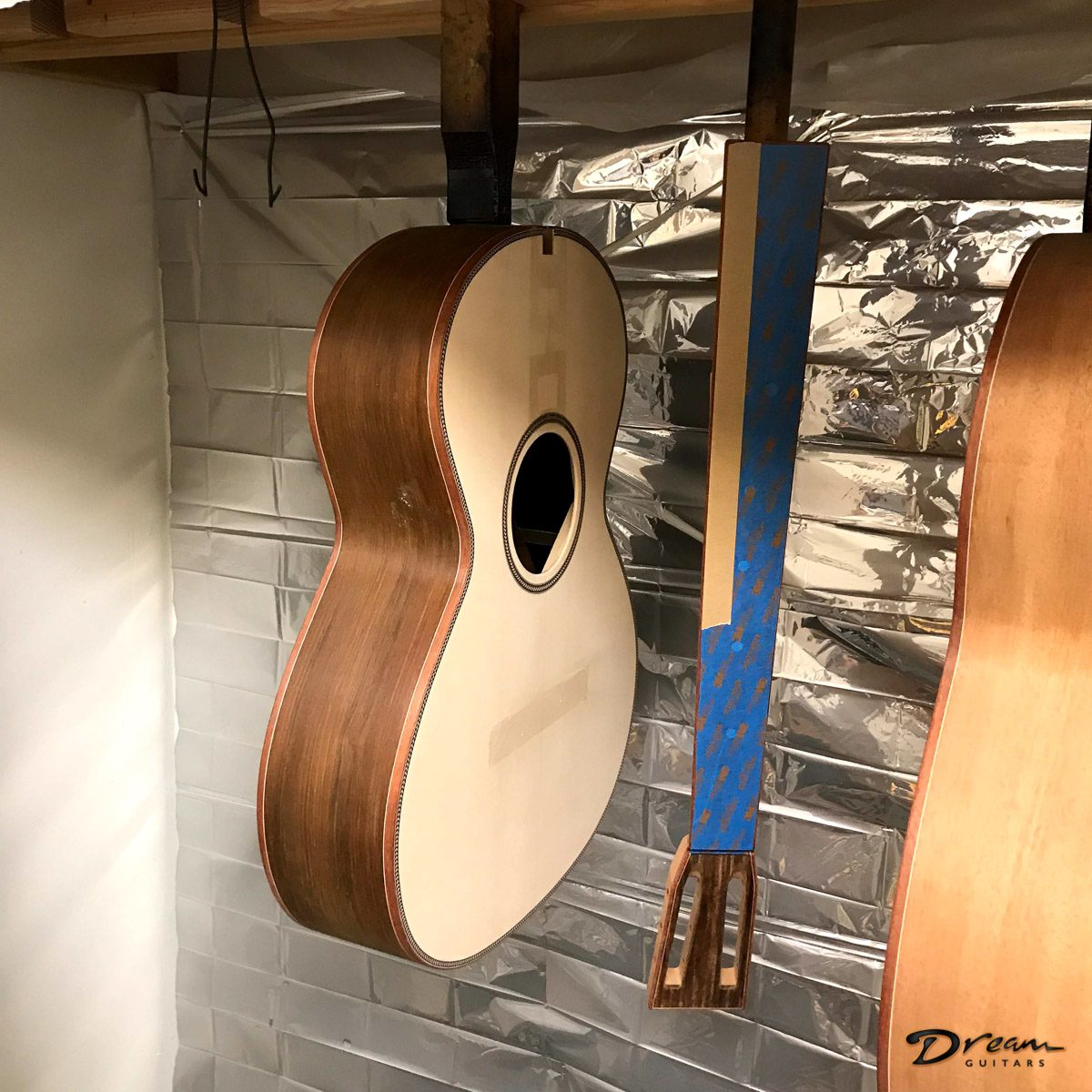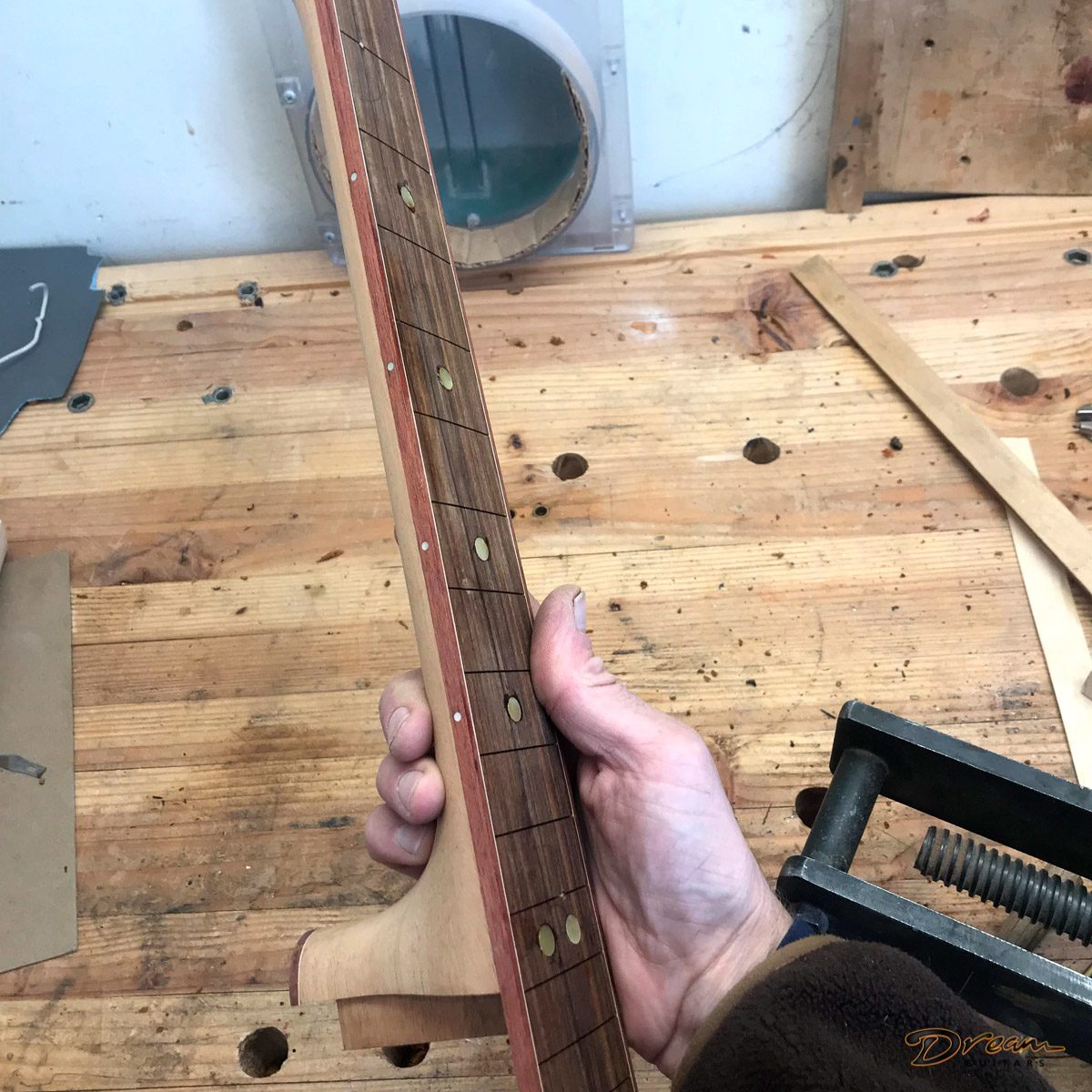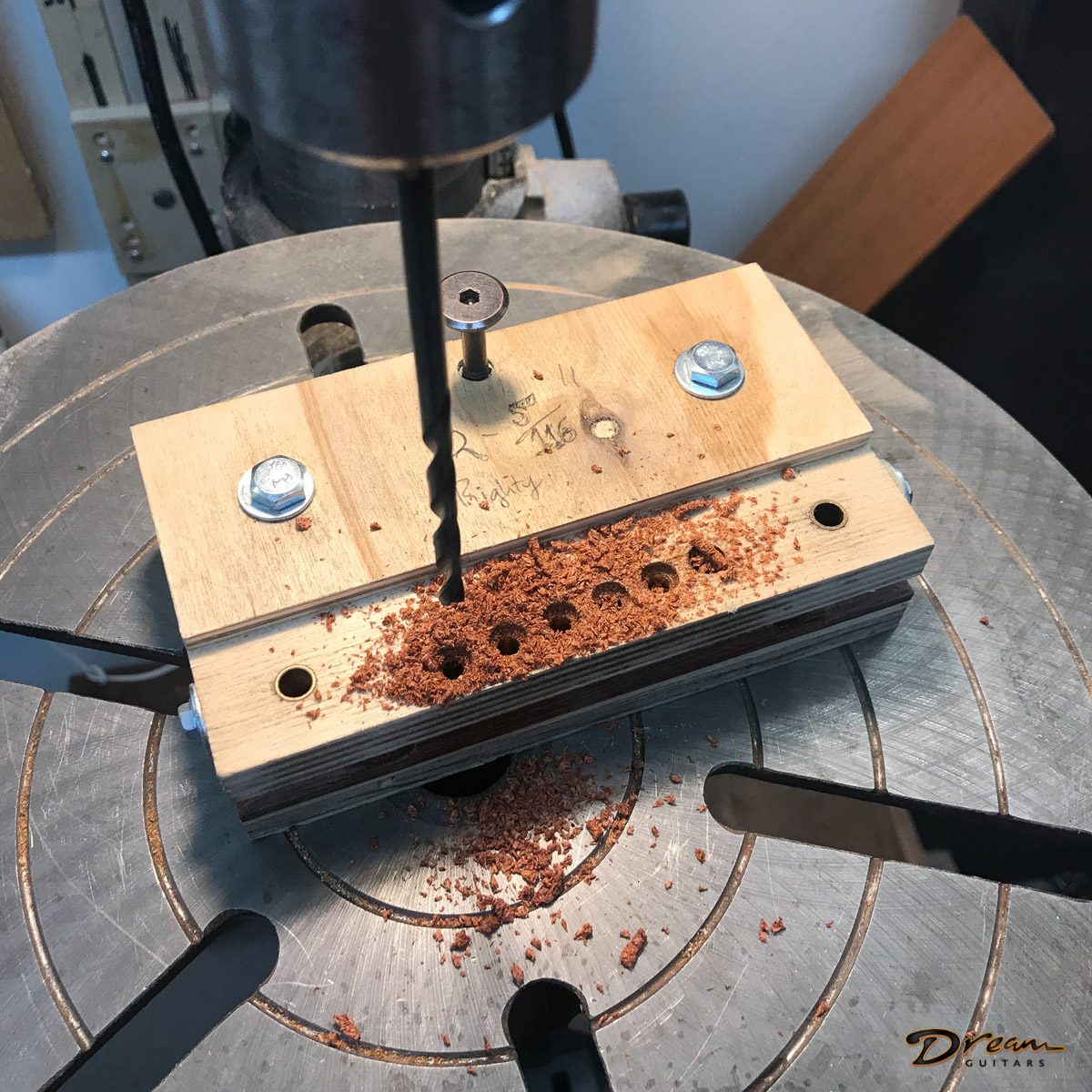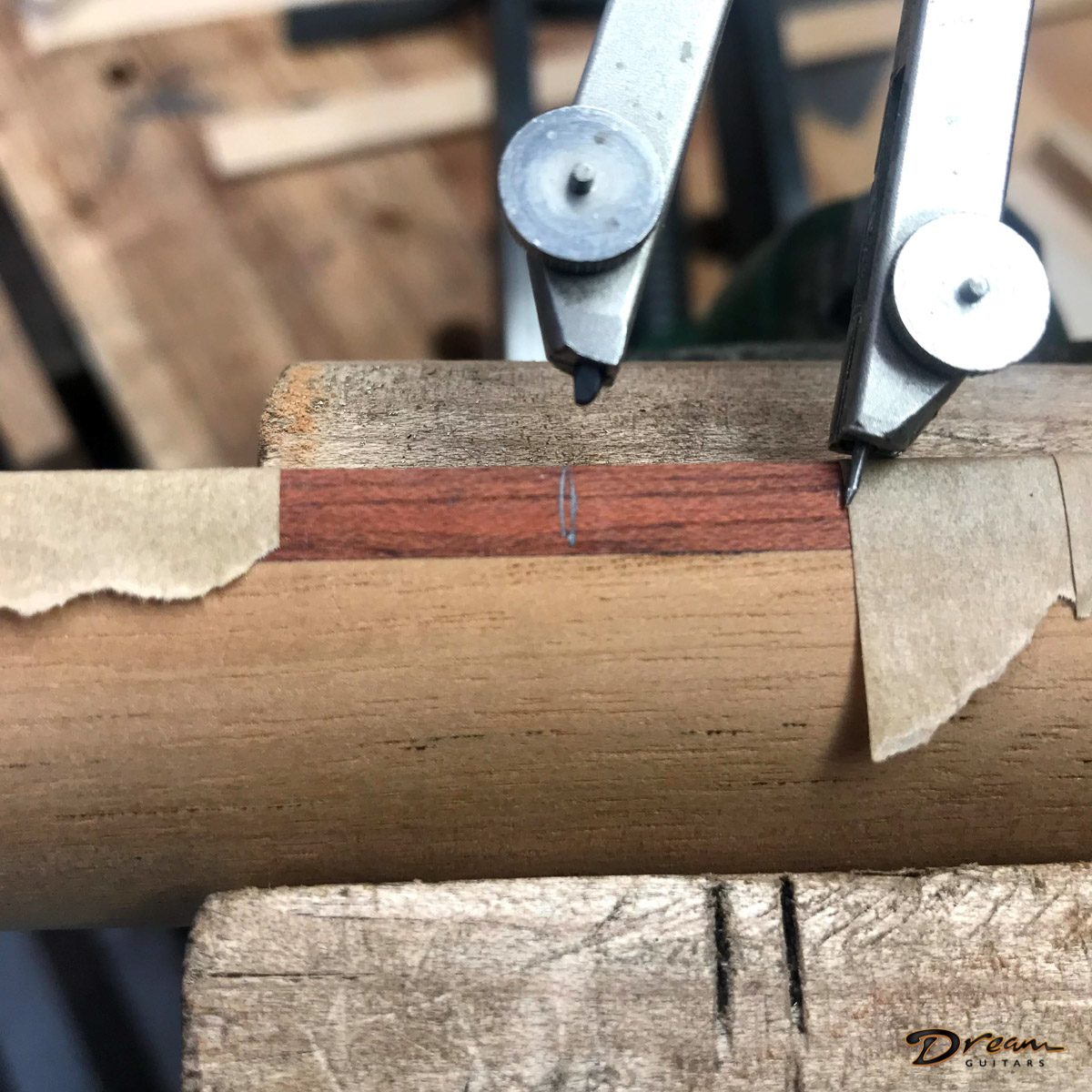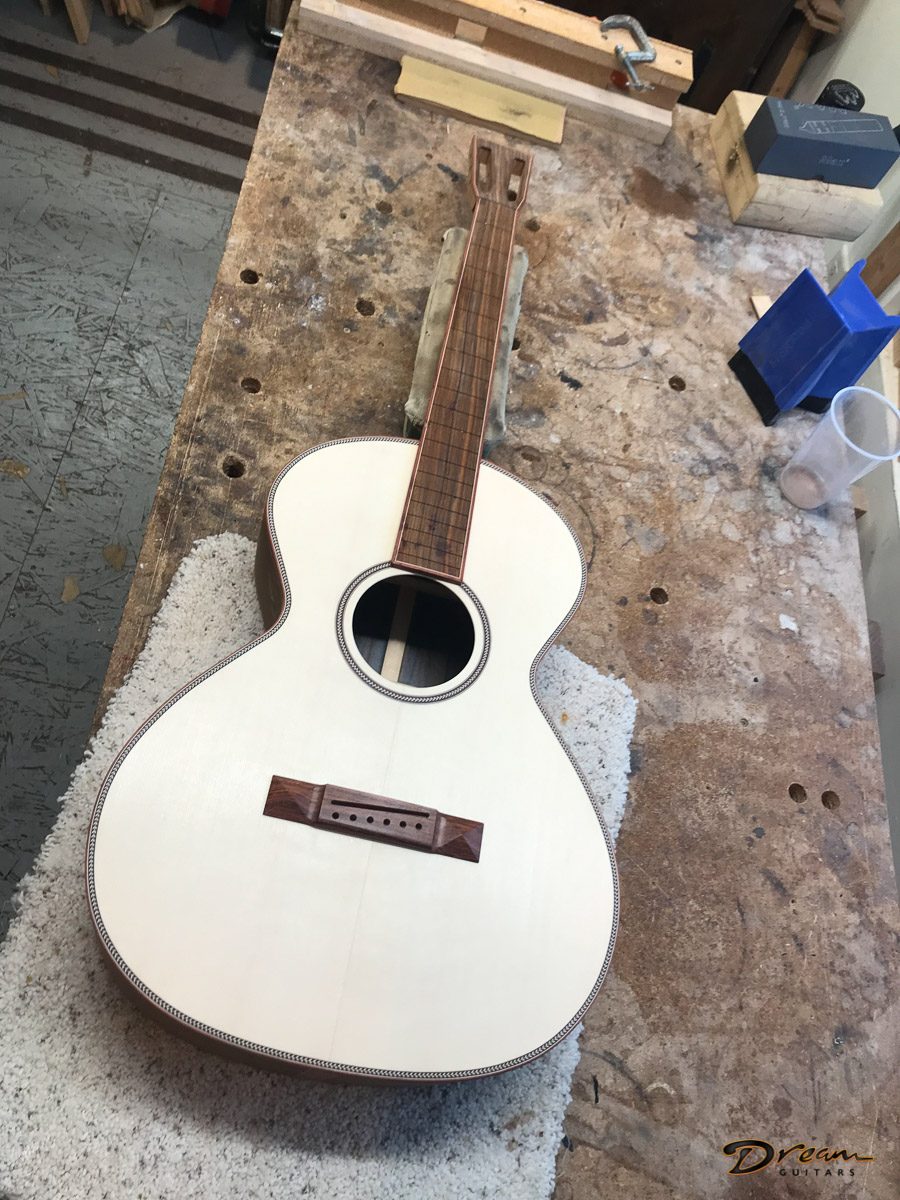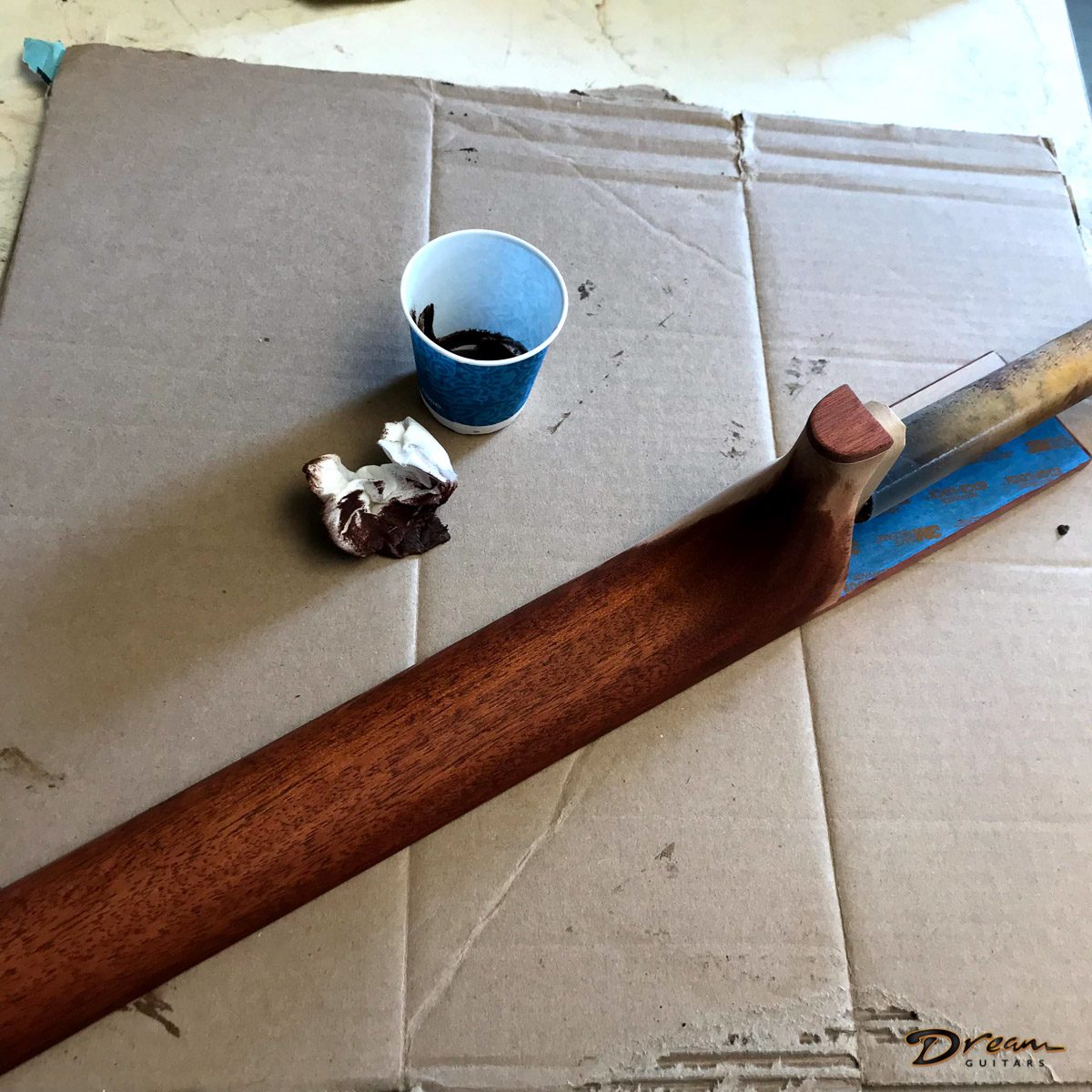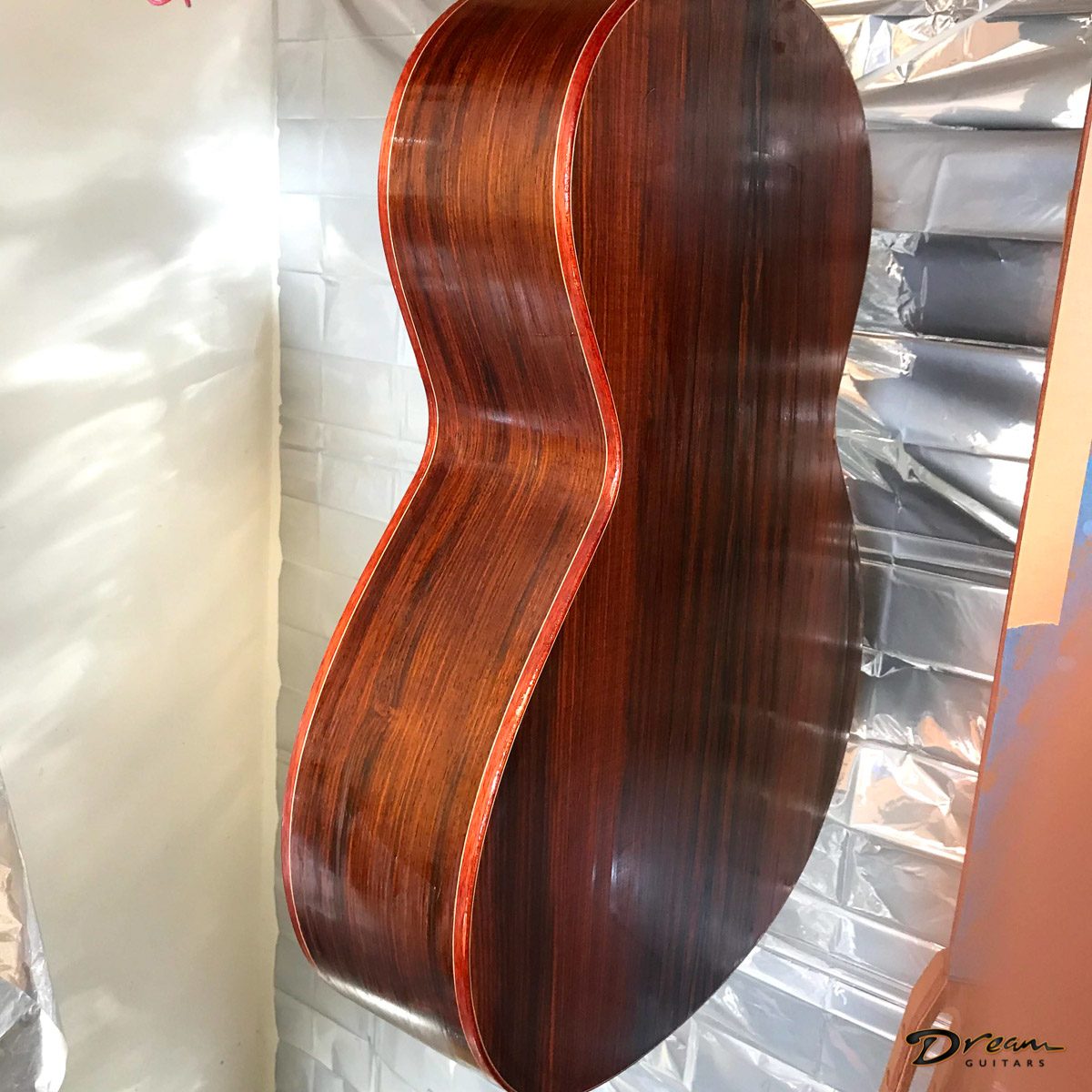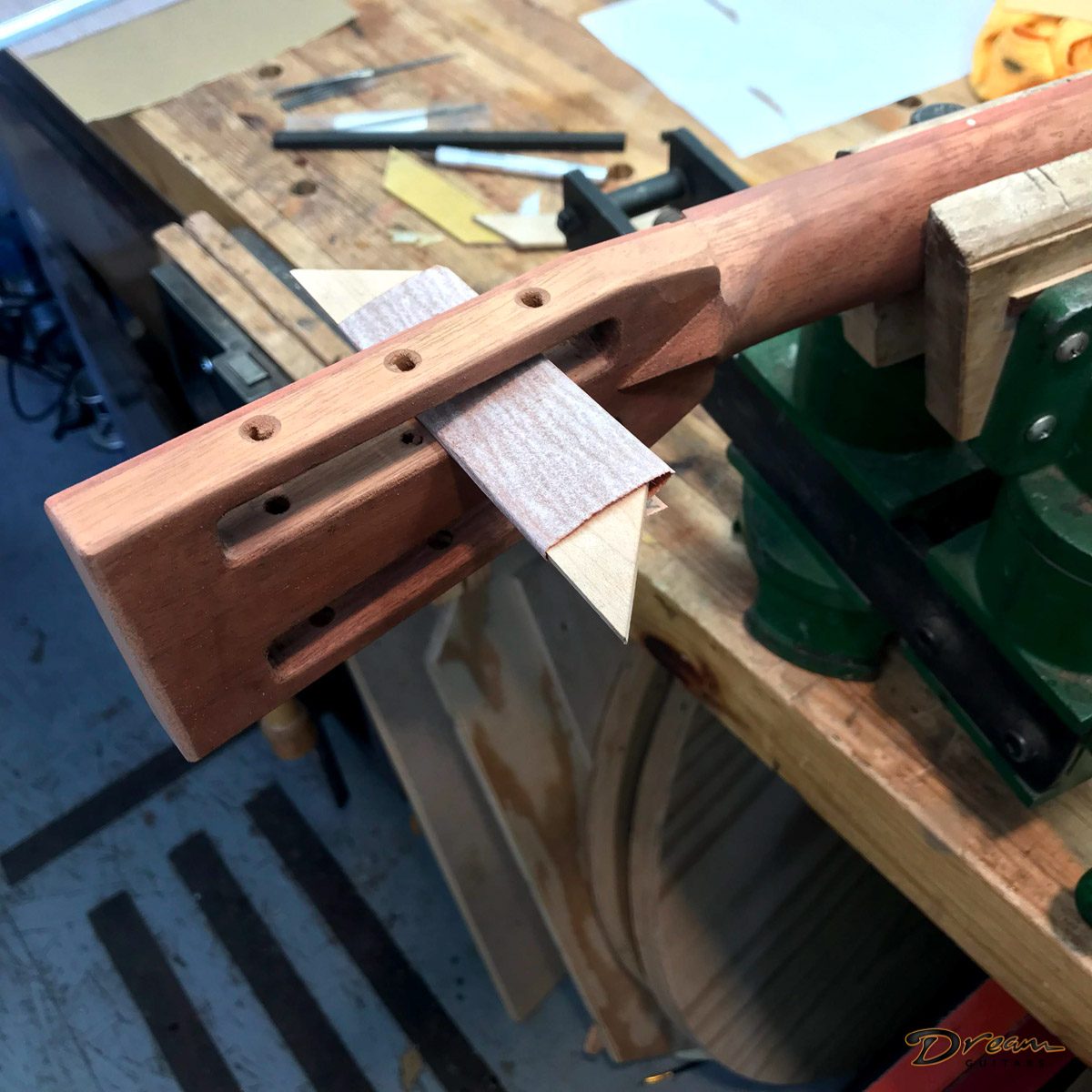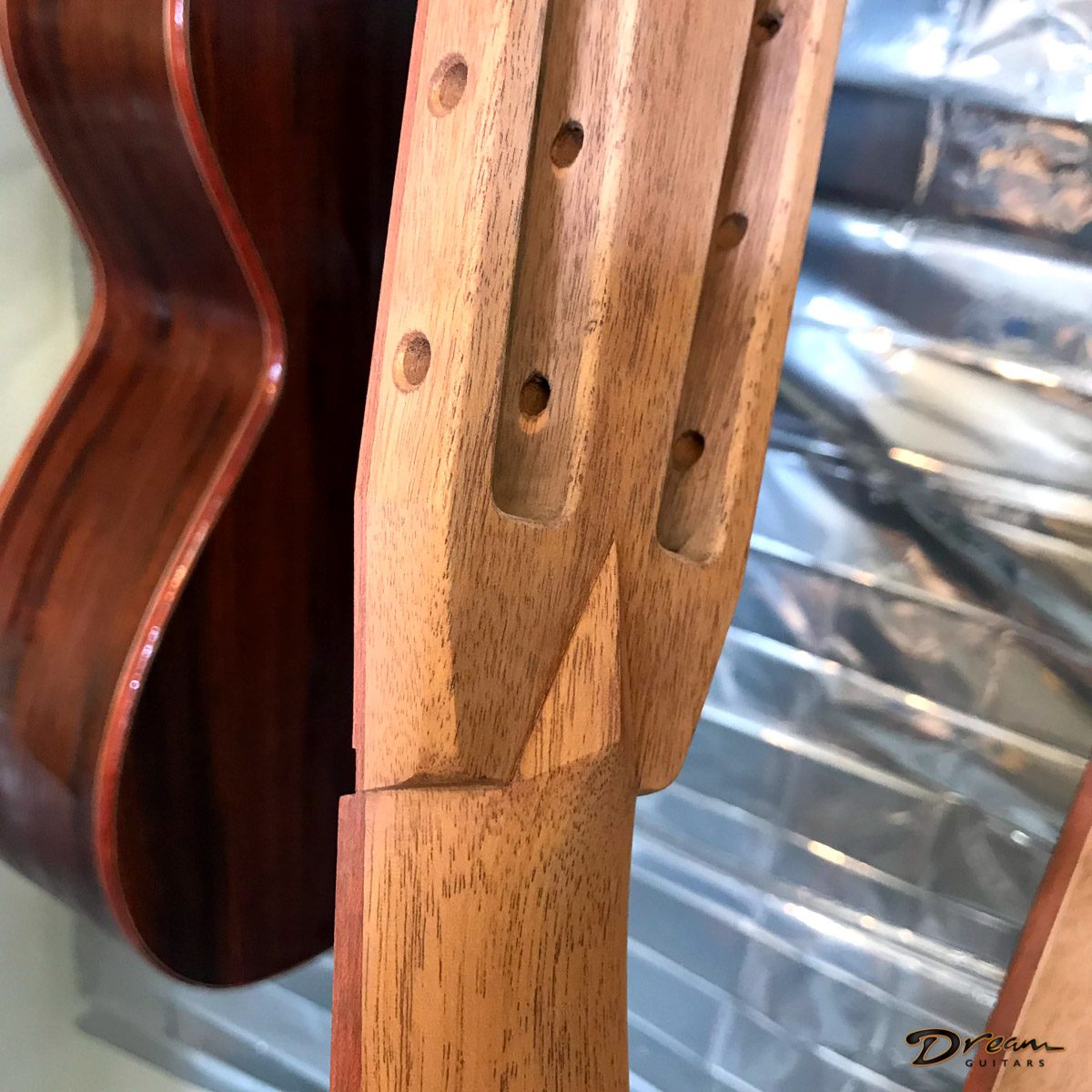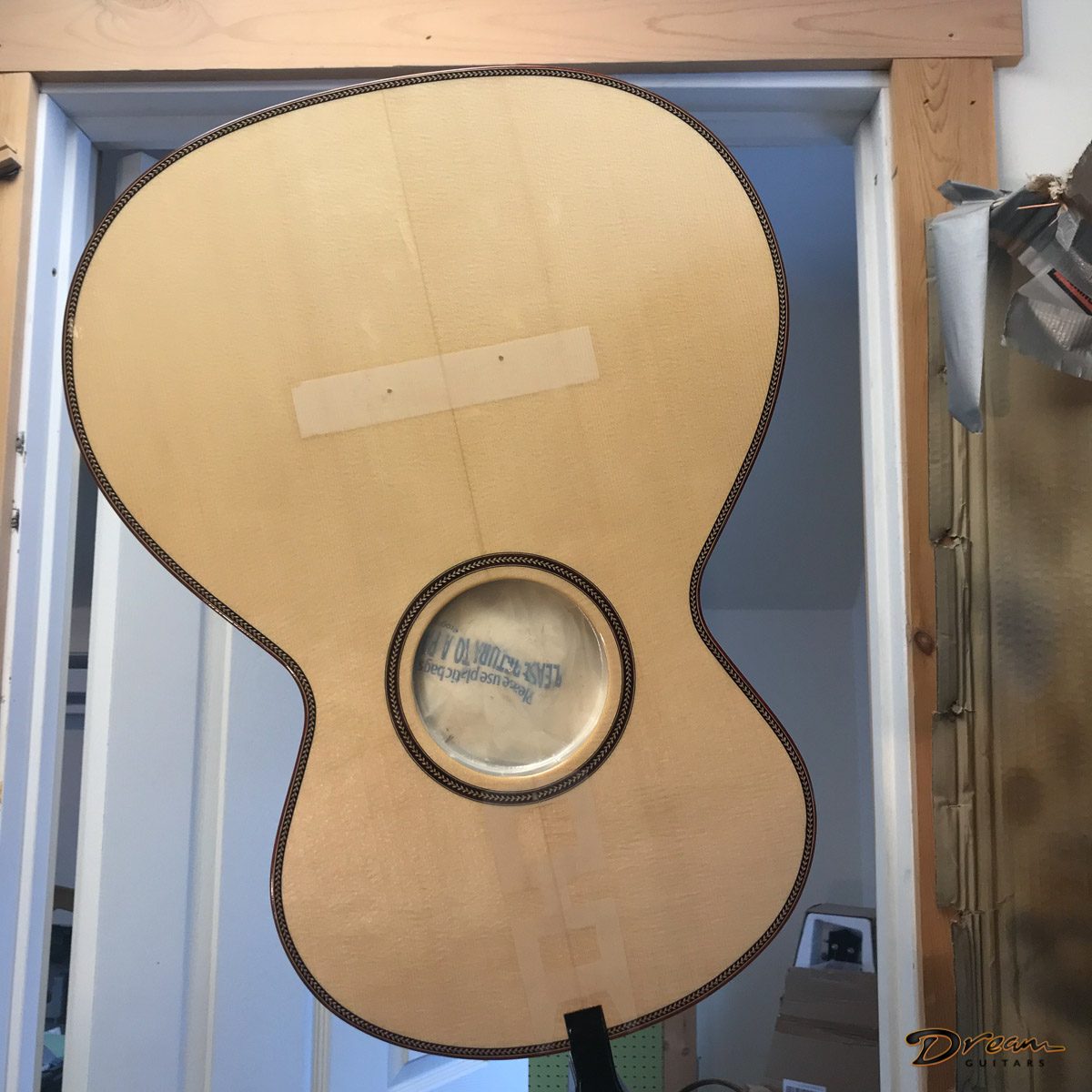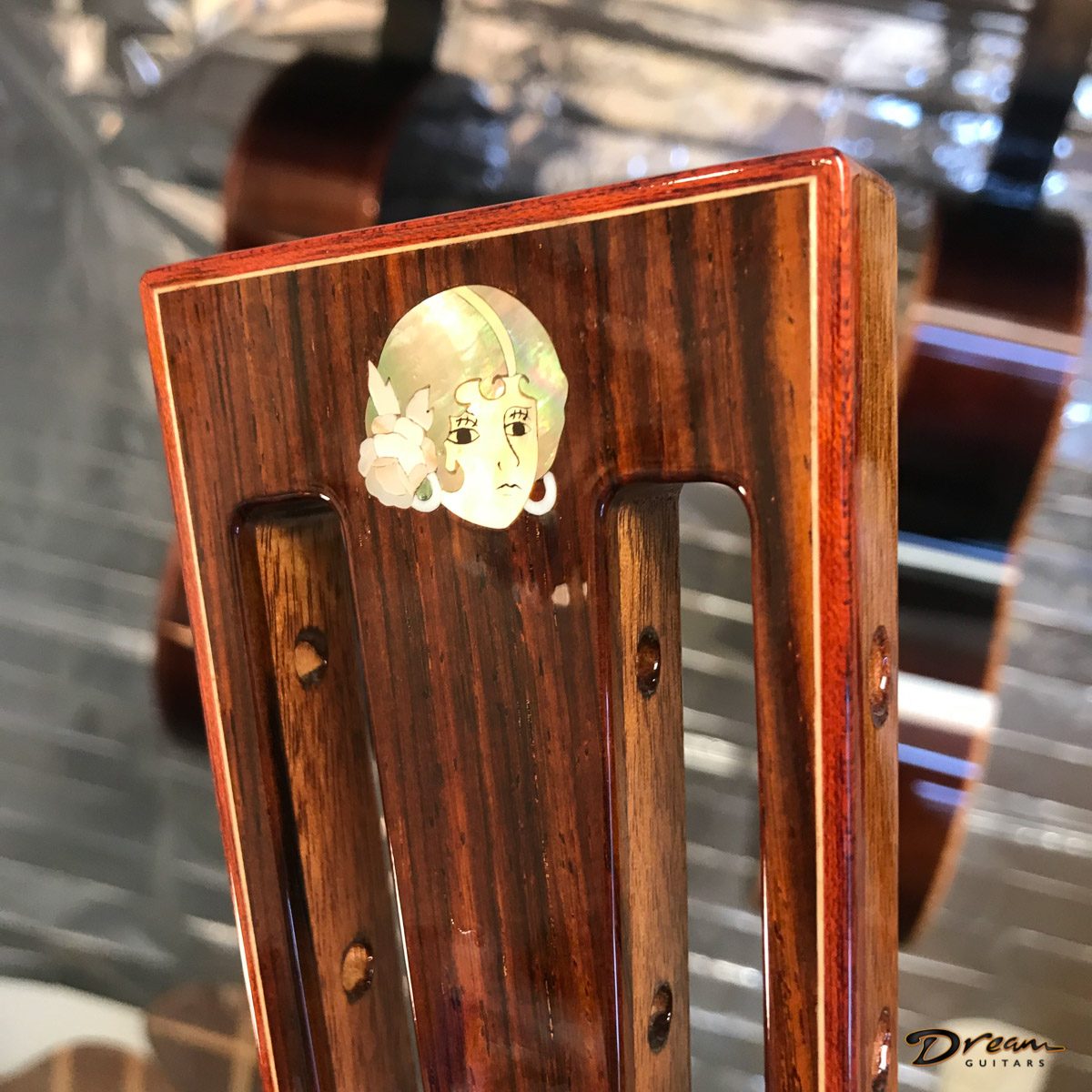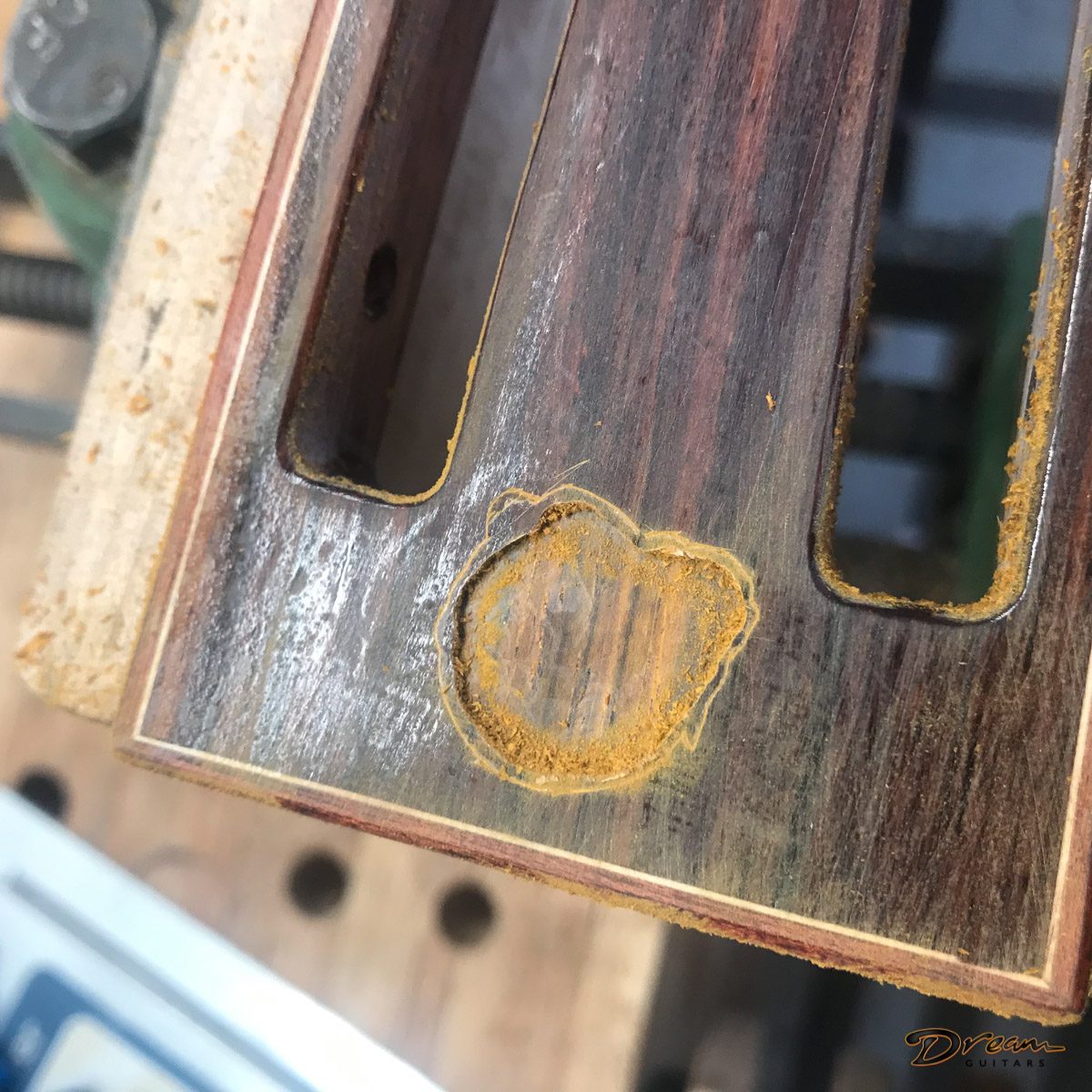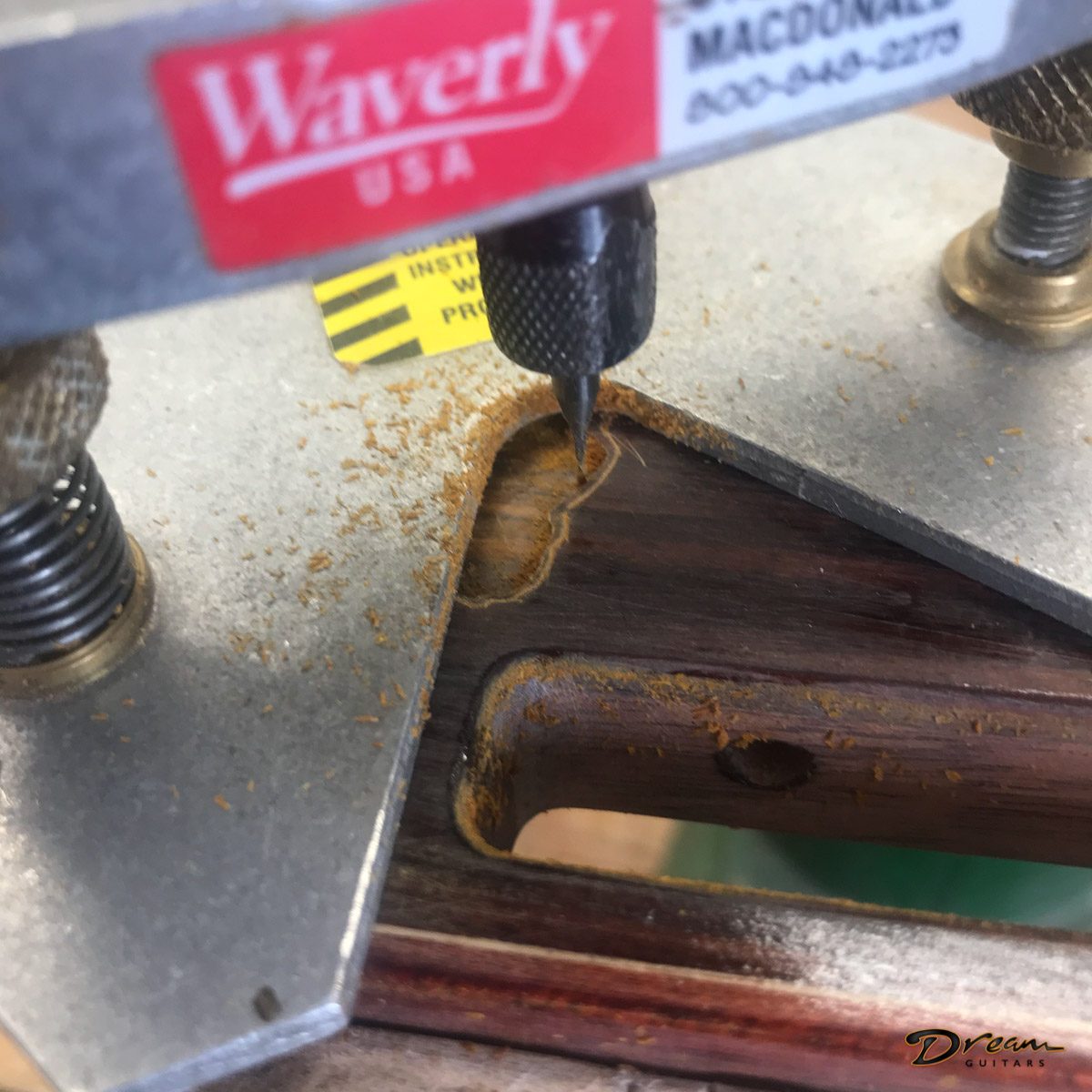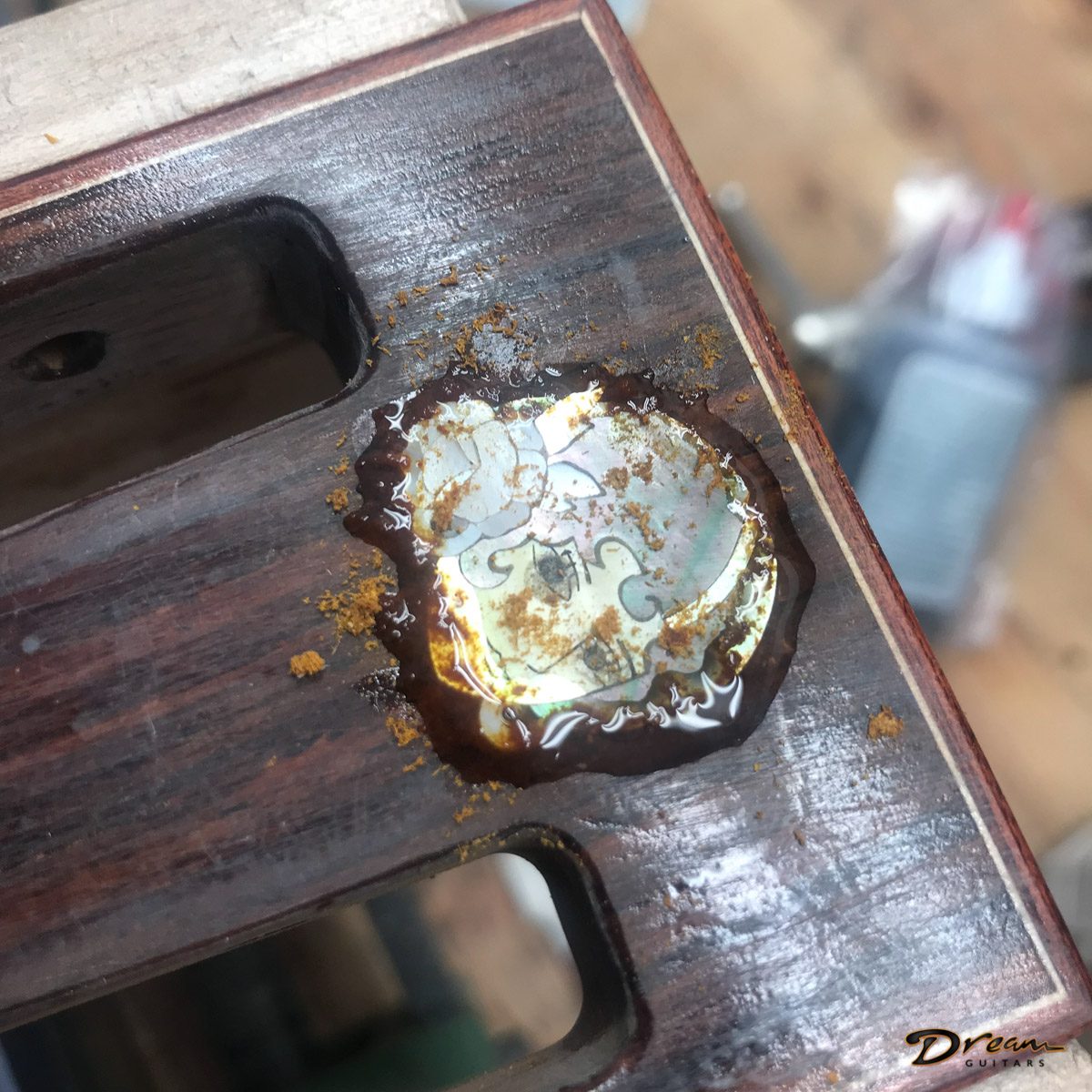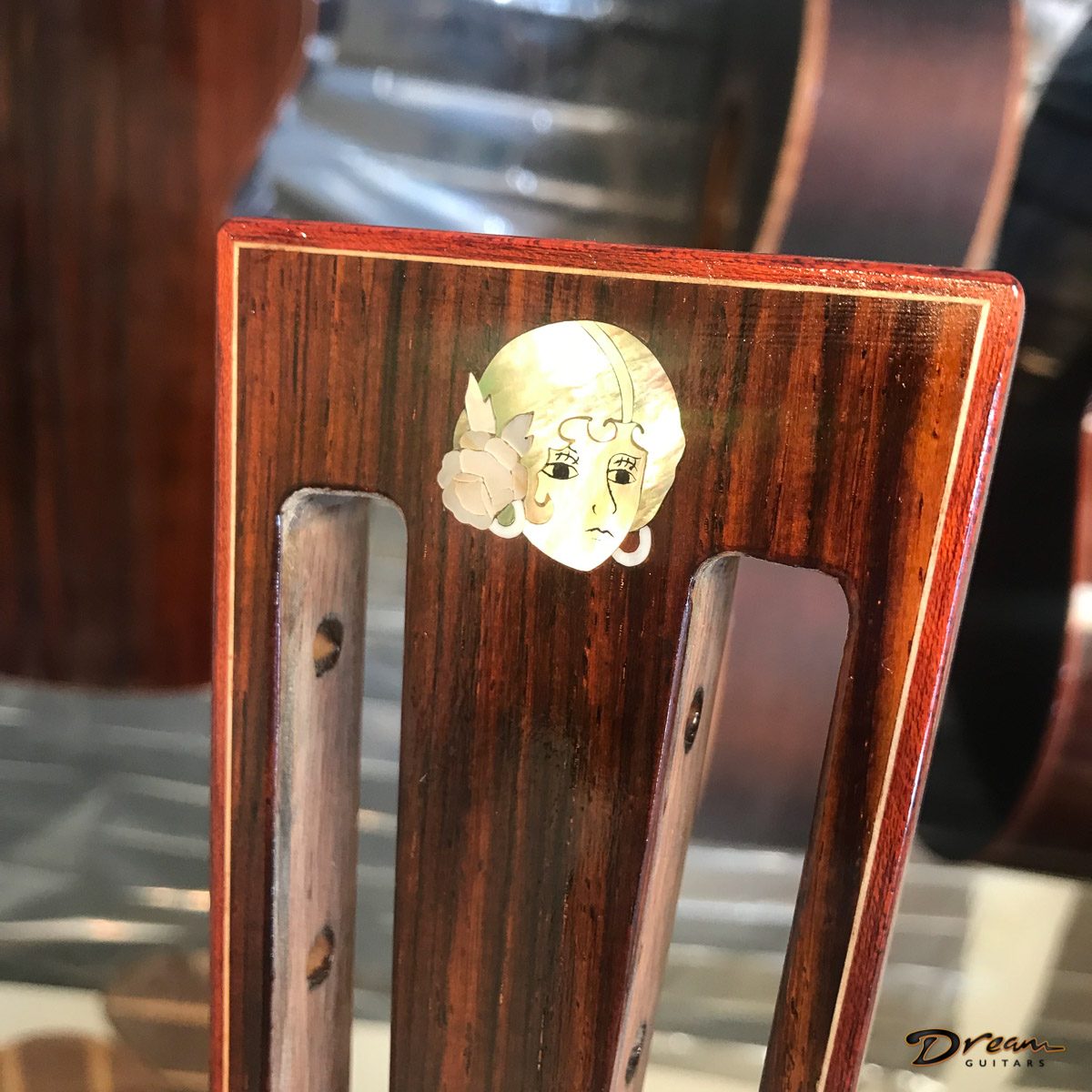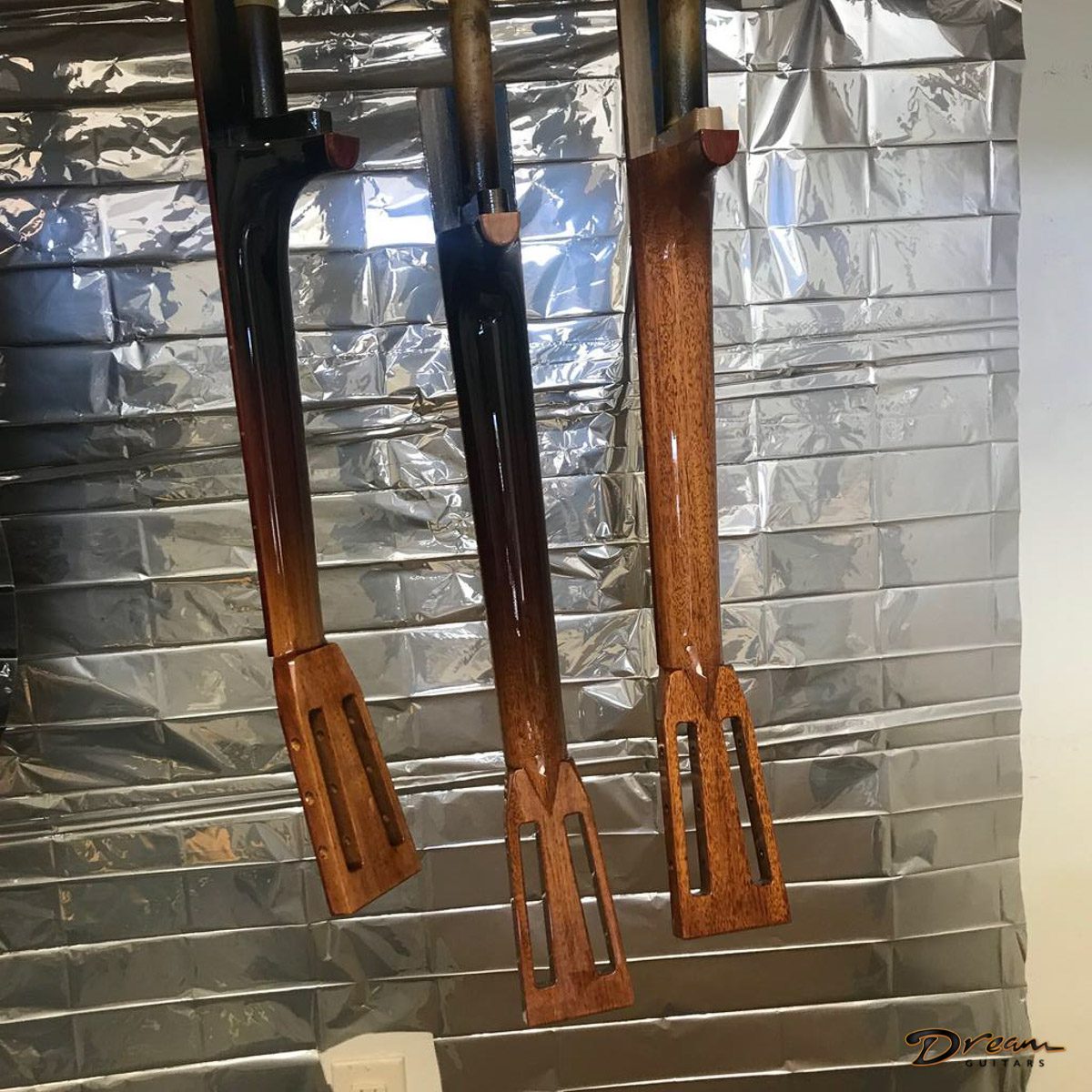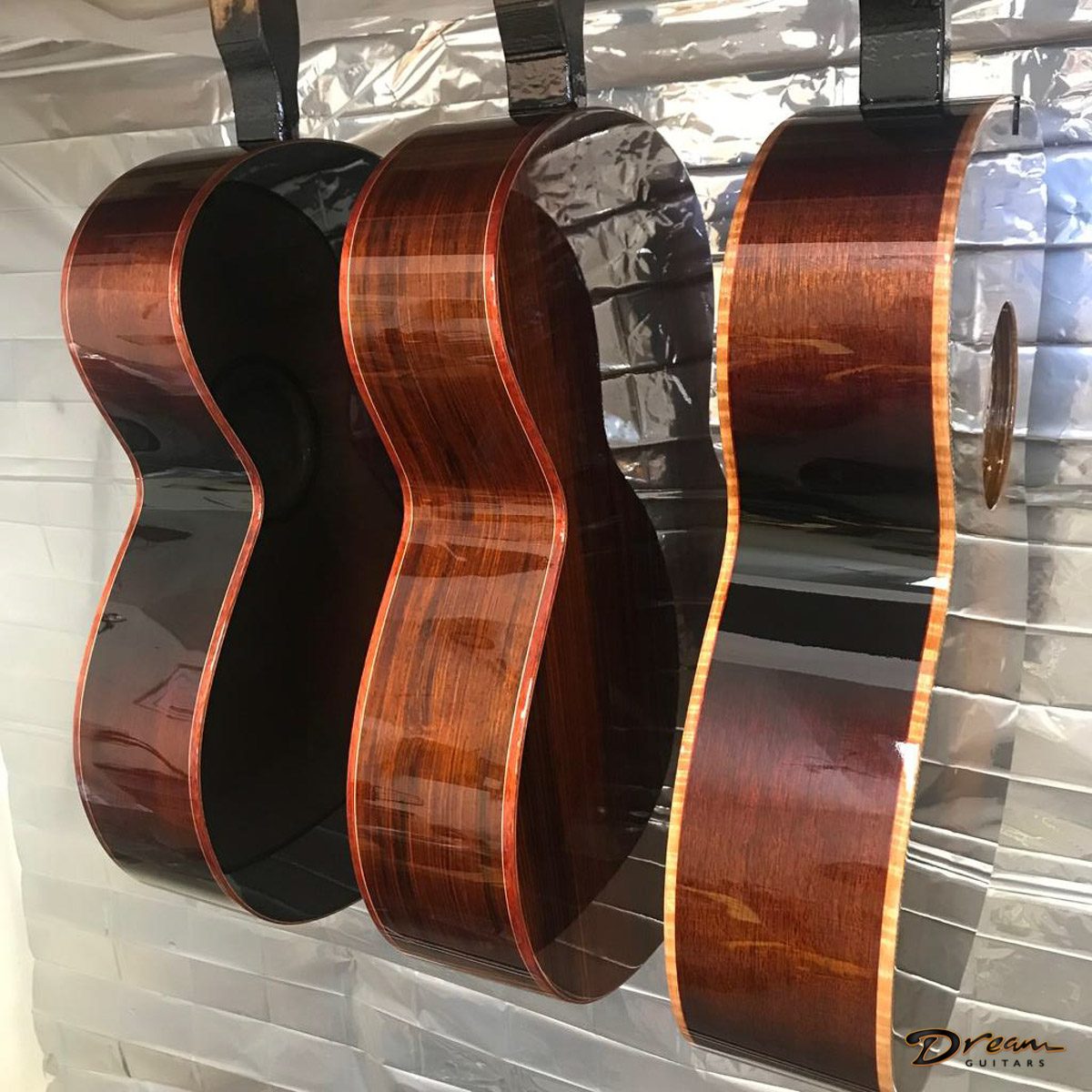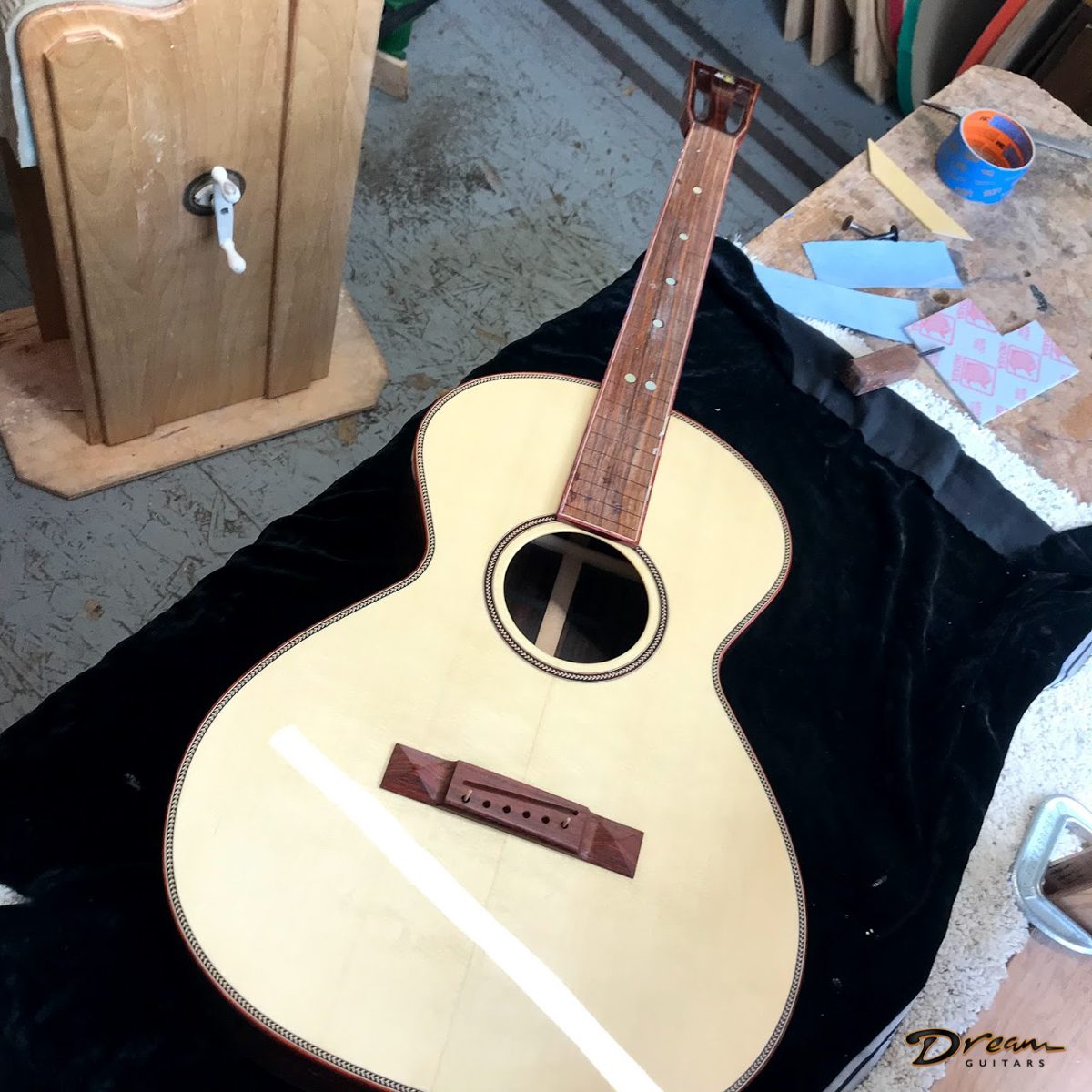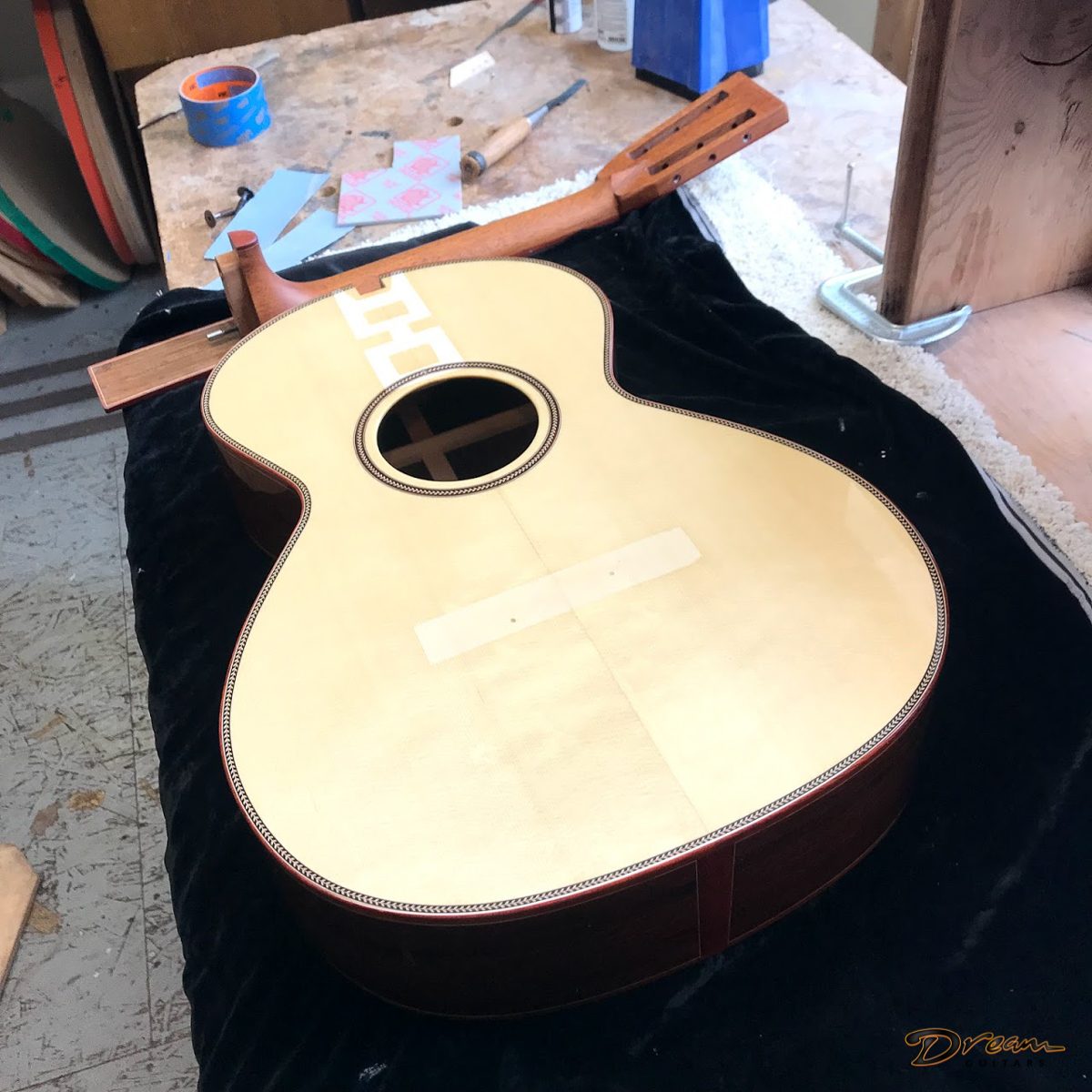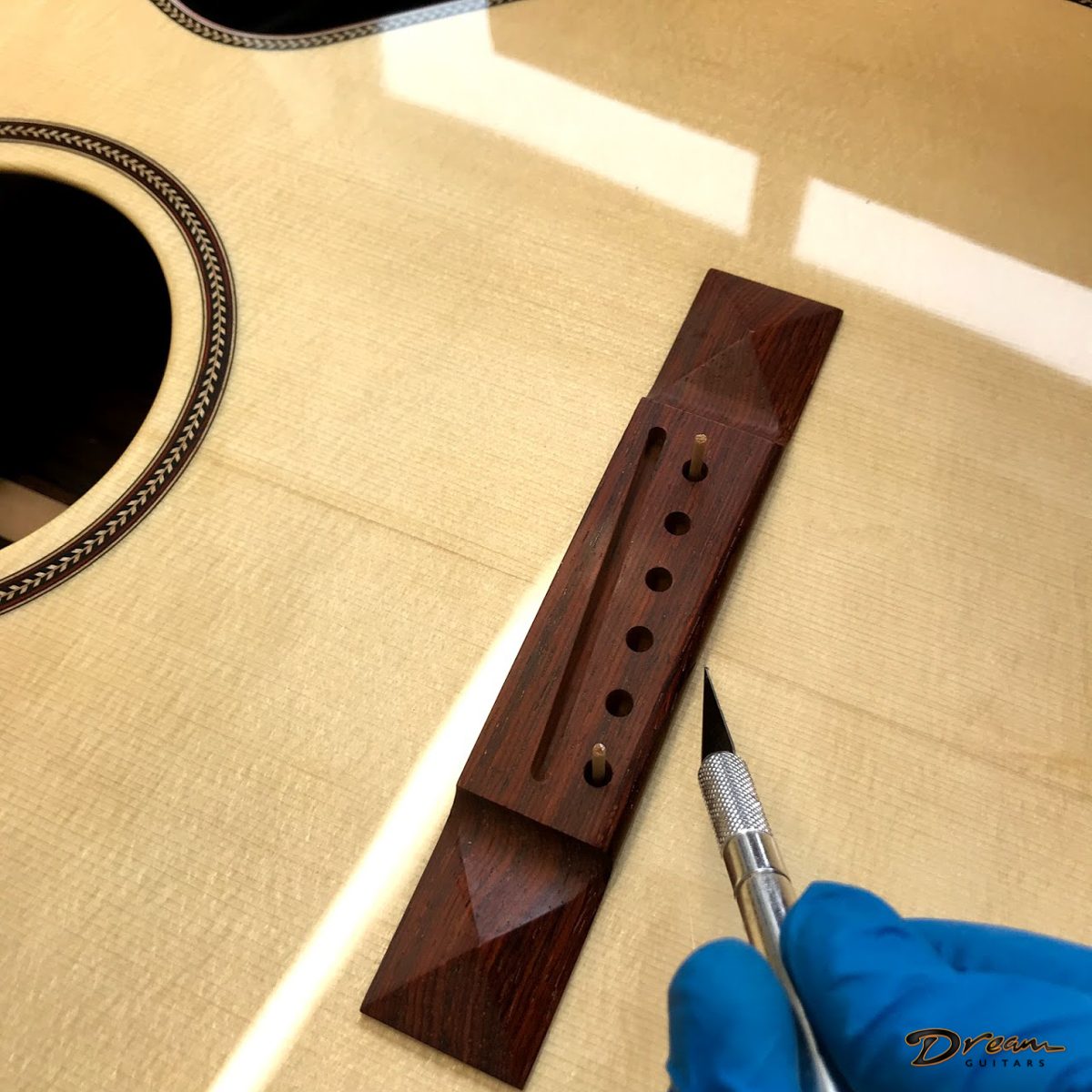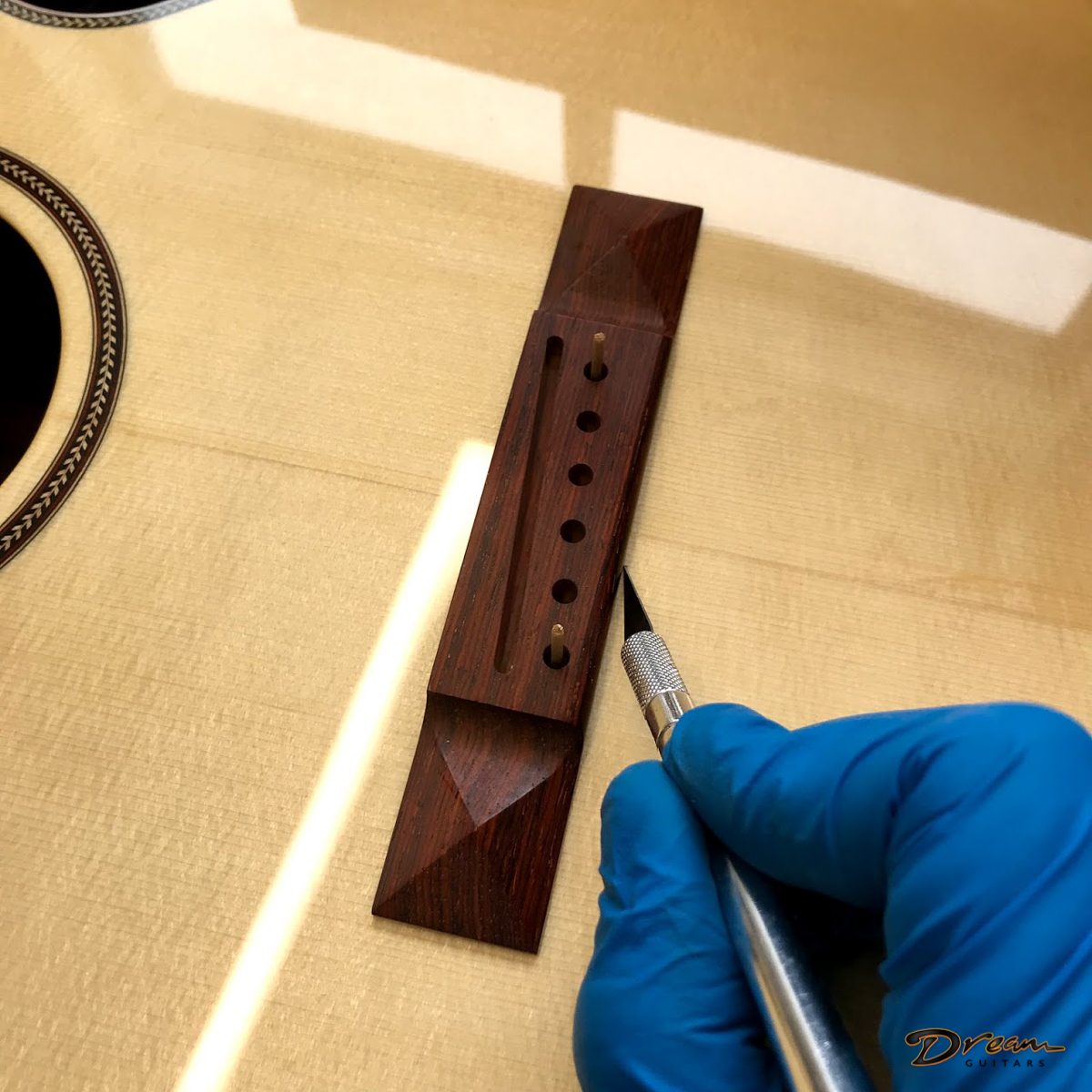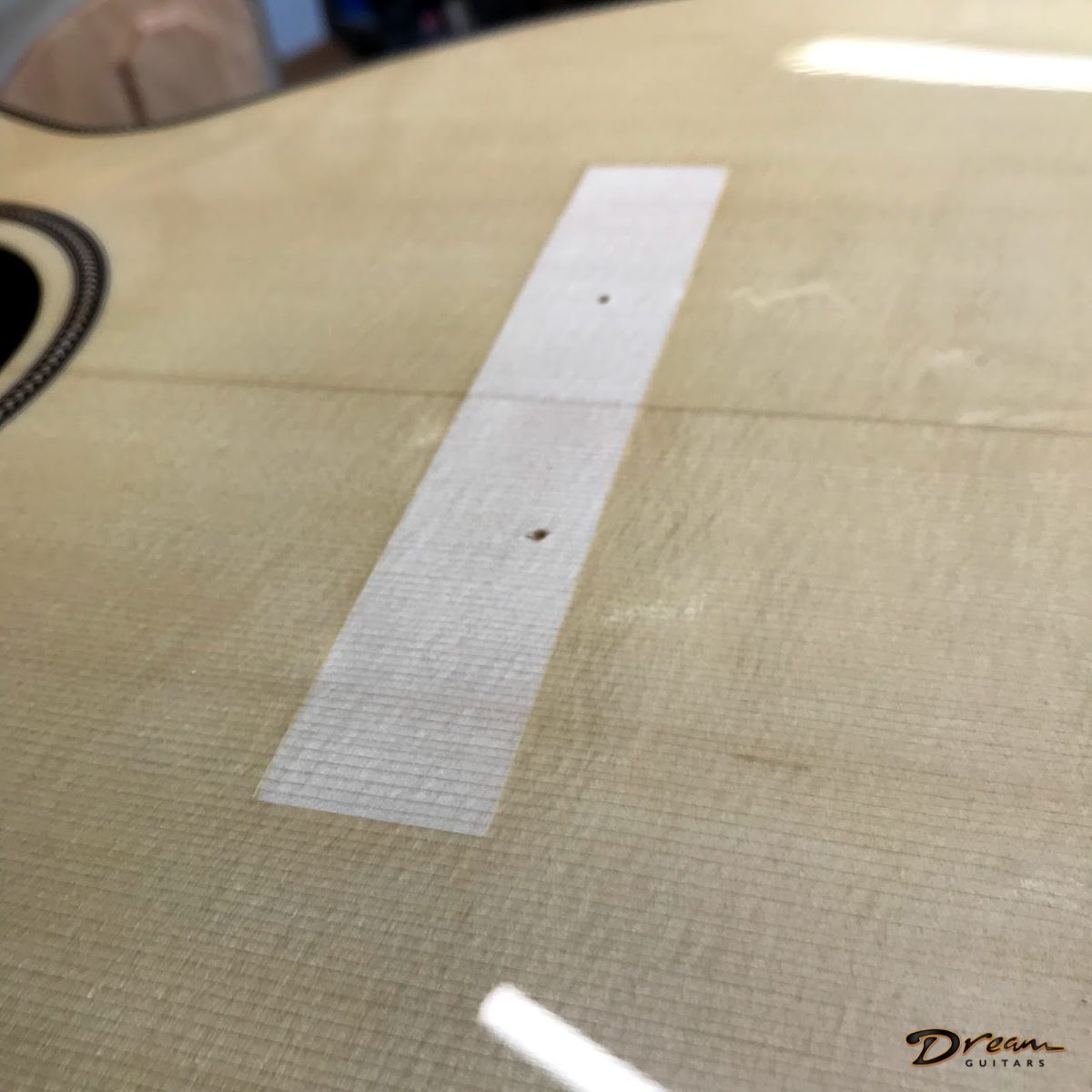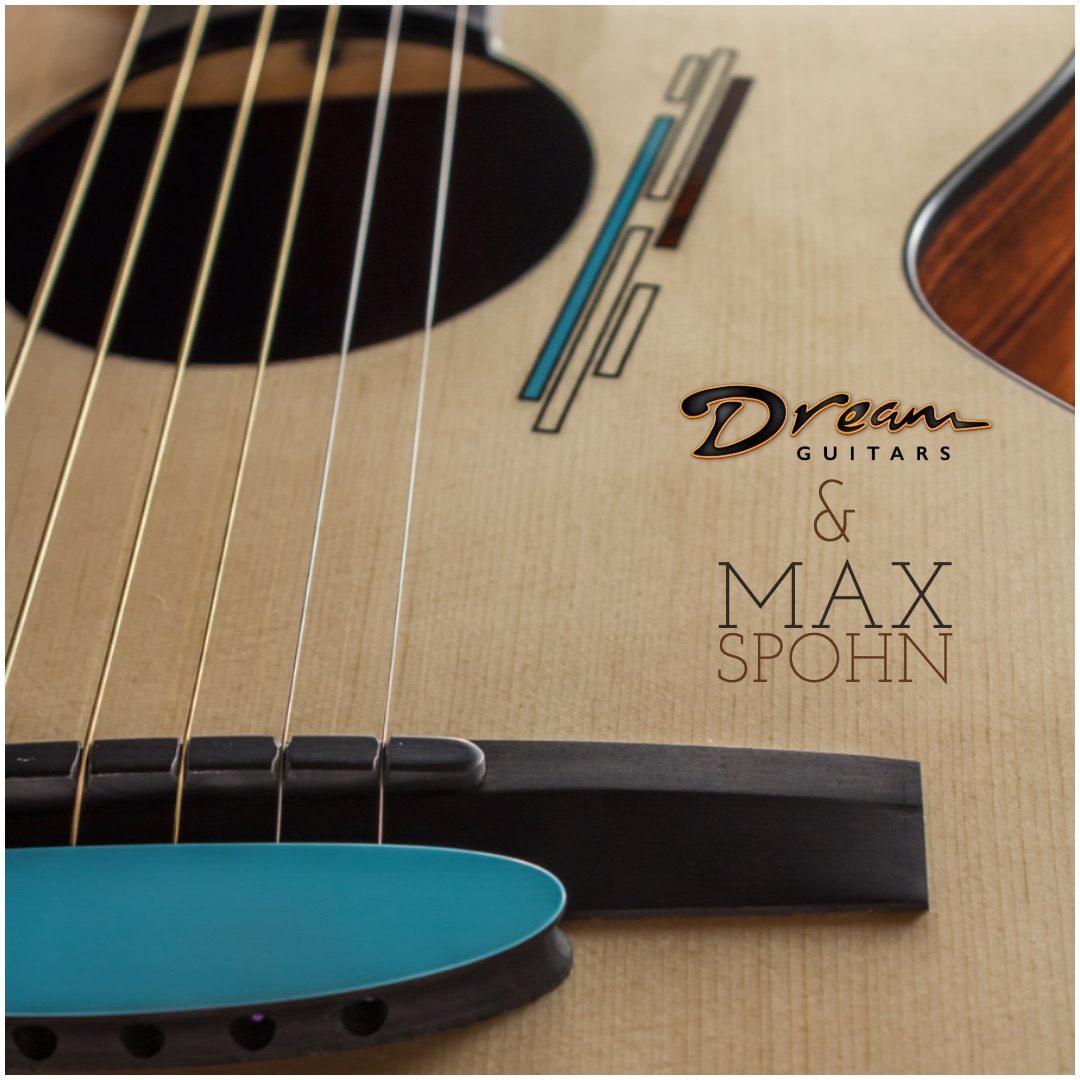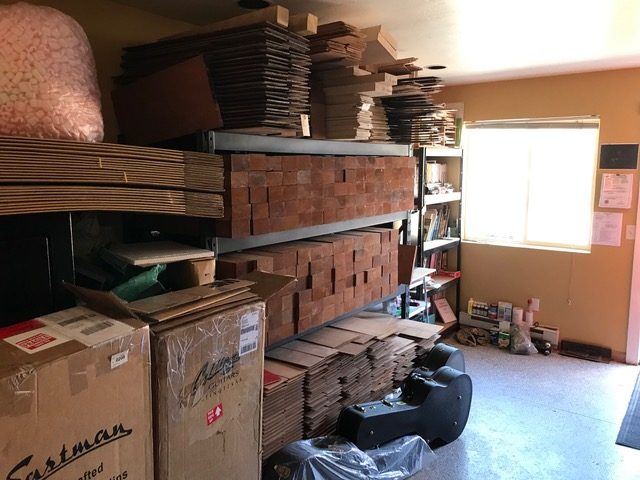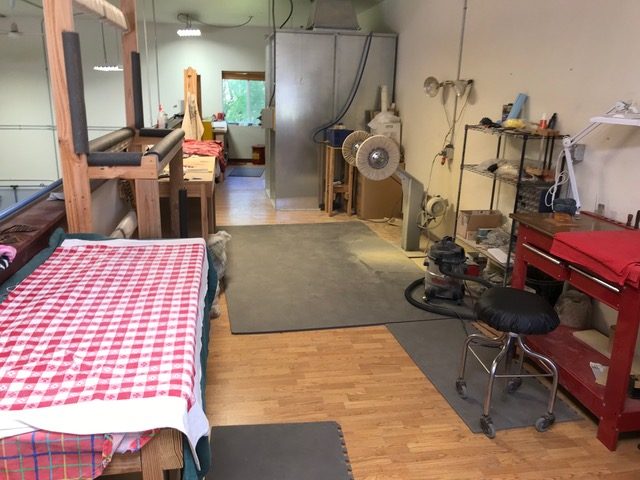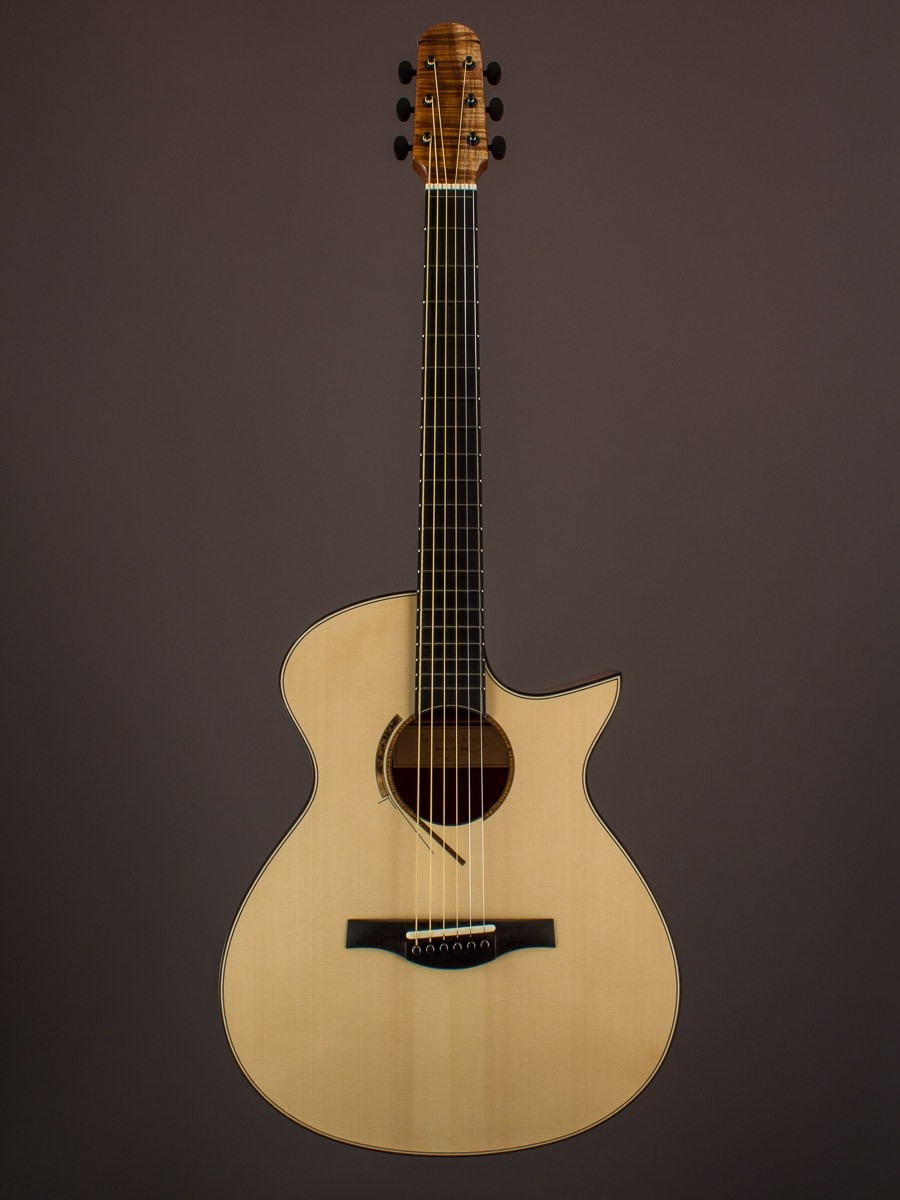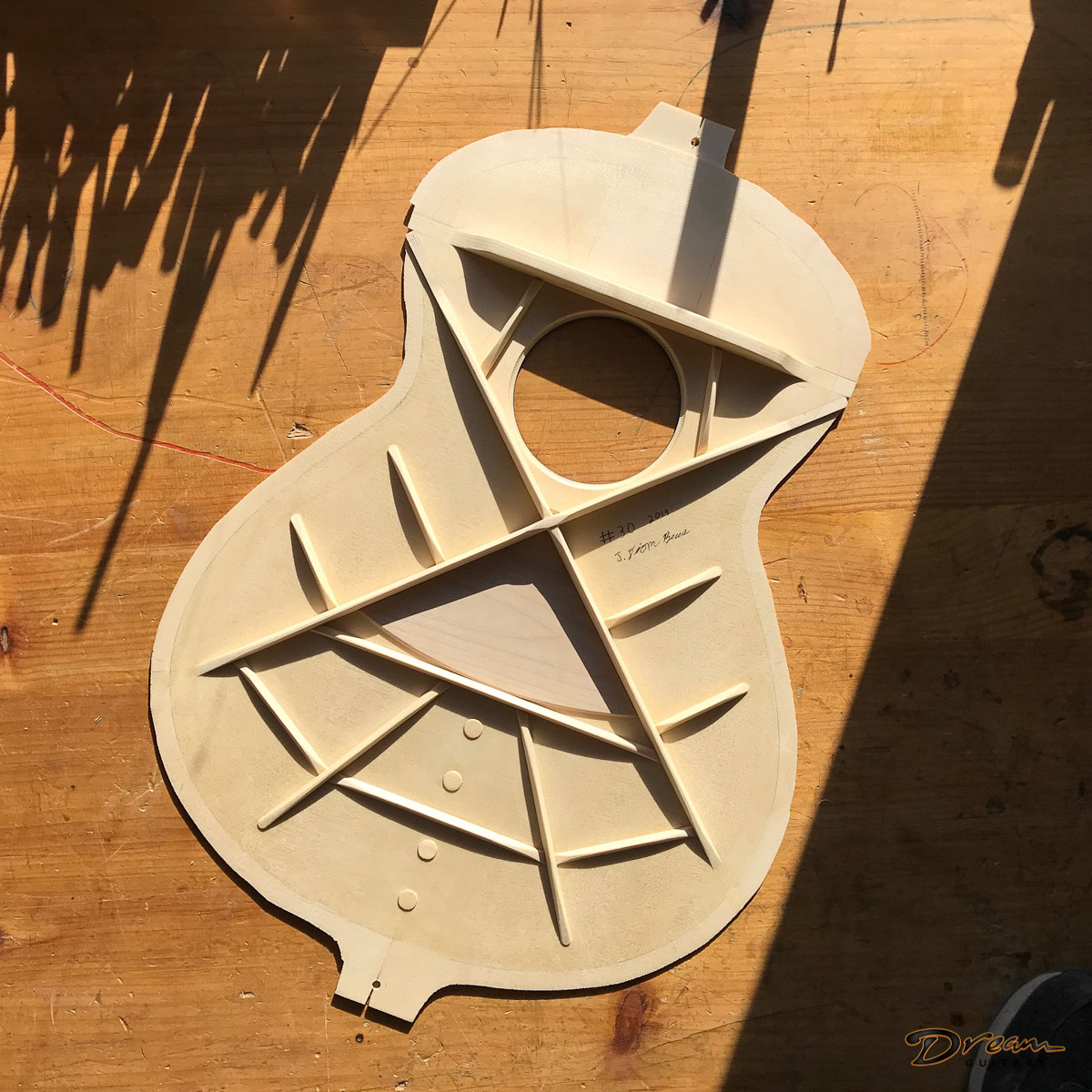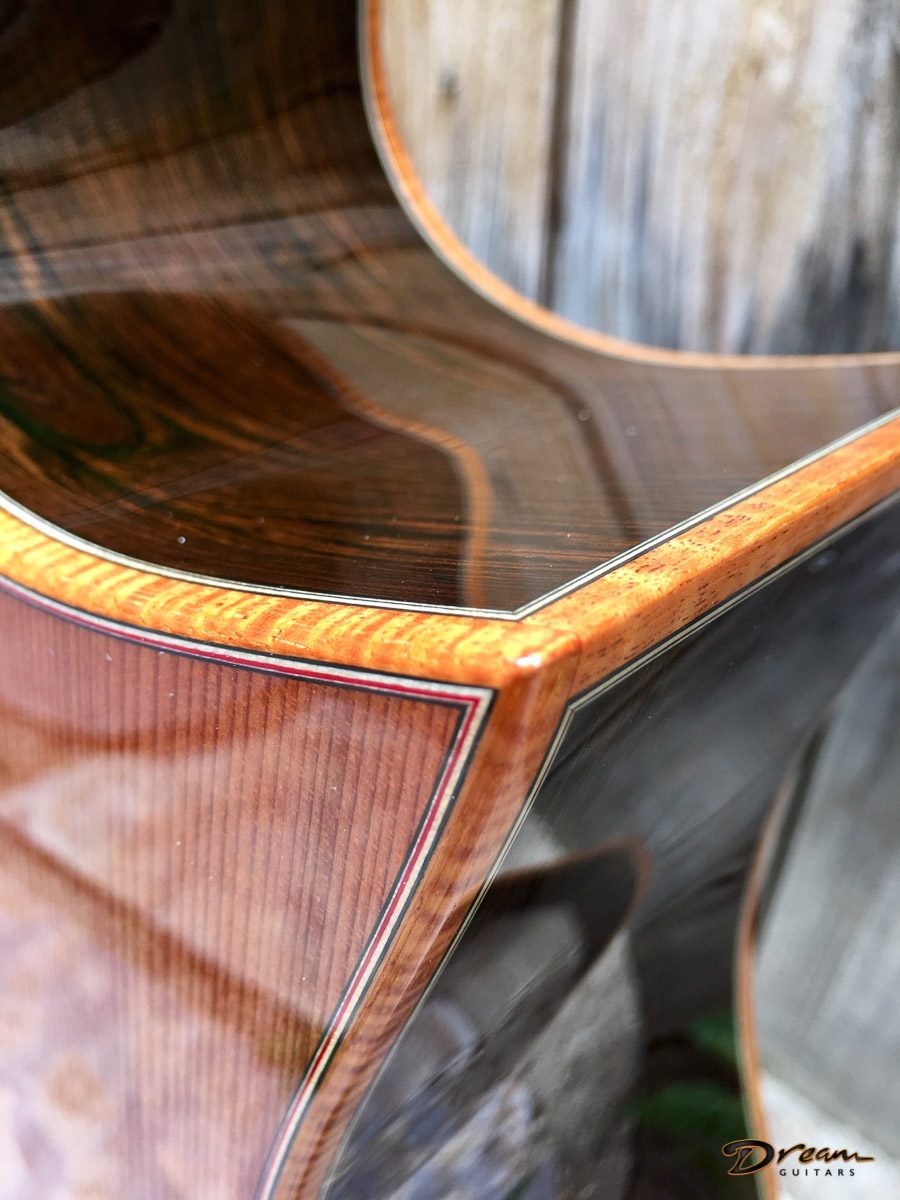There is nothing better than getting to know our builders, the creators behind these works of art we represent here at Dream Guitars. We had the amazing pleasure of discussing life and craft with Dontcho Ivanov. Following is our interview with the creator of the wonderous Snow Parlor. Enjoy!
LW: Hi Dontcho, first off Parlors seem to be a specialty of yours. What is it about small-bodied guitars that particularly interests you?
DI: Even if I currently build more full-bodied guitars than Parlors, I am still particularly fascinated by small-bodied instruments. Indeed, I have always been attracted to 19th century Romantic guitars, such as Stauffer, Lacote and Panormo, which are all small guitars. What’s funny is that I’ve always played full-bodied guitars, but I like the ergonomics of smaller bodies with their folkish voice. The tone is surprisingly big with sparkling mids. I look to give my parlors an open and balanced voice for acoustic blues and ragtime with a lot of sustain. The bigger version of my Snow Parlor, which has an almost 00 body, offers a little more bass response, which I like a lot. But in my opinion and in general, a small-bodied guitar should be light and reactive. It should resonate well in your chest!
LW: We’d love to discuss your introduction to guitar, as well as lutherie. When did you first start playing, and start building?
DI: I started playing classical guitar when I was 14 years old in Bulgaria, my home country. I was also playing electric guitar in a rock band. At 18, I got my first good classical guitar, a Paulino Bernabe student model, and fell in love with its sound. Because of that guitar, I decided to continue more seriously with my classical guitar studies. When I arrived in Montreal, where I live now, I studied classical guitar interpretation at the University of Quebec in Montreal and got my BA. Thanks to my teachers Alvaro Pierri and José Harguindey at that time, I had the opportunity to play many great handmade guitars. Two guitars impressed me a lot: one was made by René Wilhelmy and the other one by Daniel Friederich. It was such an eye-opener to realize how much inspiration you can get from a good instrument! I was 38 when I started building guitars and without a doubt my experience with those two amazing instruments still motivates me to build guitars that inspire and bring out the best in a guitarist. To me, it’s important to always be in contact with great instruments. That’s one thing I love about the many guitar shows I exhibit at. Aside from presenting my work, I have the precious opportunity to meet so many amazing and inspiring builders and try their guitars, which certainly contributes to my development as a luthier. To play your best you have to play a great guitar, and to make a great guitar you have to be in contact with great guitars.
LW: Walk us through your approach to voicing. Is there a particular tone or quality that you’re aiming for?
DI: To me, voicing is giving the guitar its soul, so this is one of the most important and intriguing steps in the process of building. It’s also one of the more complex. There is a lot to keep in mind when it comes to voicing, with so many things to consider. My bracing is based on the parameters of my teacher, Mario Beauregard. I also pay particular attention to how the soundboard and the back work together, the correlation between body size, bridge location and type of wood. In terms of sound quality, I am aiming all the time for sensitivity of the instrument, evenness between notes and registers, and of course, volume.
LW: What, in your opinion, sets you apart from other builders?
DI: I feel like I share the same concerns as other luthiers, which is the sound of the instrument. For that reason, I don’t think anything makes me so different. But of course, everyone has their own approach and their particular style. I have heard people calling me “the maple guy.” It’s not a label I’m particularly fond of, since I’m drawn to all types of wood. In fact, if anything does set me apart, it could be my particular obsession with using the highest quality wood. This not only gives you the best acoustic results, but working with precious wood also hones your craft. In a nutshell, quality wood inspires your work to be its best, in the same way a great instrument inspires a player to play better and to evolve in his art.
LW: Everyone has opinions about tonewood. We find most folks think Brazilian Rosewood is king, but you seem to build a lot with Maple and other Rosewoods. How do you feel they compare to Brazilian, or other woods?
DI: If Brazilian Rosewood is king, then Maple is a prince. It always seems fresher and younger in my eyes. But to me, it doesn’t matter so much what wood you use. What’s important is understanding what a particular wood can give, understanding its character and particularity and work it to bring out its full potential. Some types of wood are suitable for a particular use and others have a very wide range of applications. If a wood excels in qualities like stability, ease of work, visual appeal, if they smell good, and on top of that they have a particular resonance, these woods become precious to us luthiers, and we cling to them. To me, Maple is a precious tonewood, especially when I think about some European species. It’s been used for centuries by the European luthiers and appreciated for its frank and direct response. With Maple you can build responsive lightweight instruments, which I like a lot! That said, I love Rosewoods too: their smell, their beauty and of course, their complex and rich sound. For my OM model, I like to use Madagascar Rosewood, because it gives a rich and balanced tone with clear note definition with a lot of harmonics, perfect for many genres and styles of playing.
LW: What’s on your bench right now?
DI: First, it’s my new bench, since I have a new work space! Presently I’m working on two Romantic guitars, both commissioned, one classical with a cedar top, and one Snow Parlor 00, which I’ll exhibit in Berlin. When these are done, I have an order for a Flamenca blanca, commissioned by a very talented Montreal-based guitarist.
LW: Who are some of your favorite guitar players? Have you built instruments for any of them?
DI: All my customers are my favorite players so yes, I have! That said, if Pierre Bensusan, Mark Knopfler, or Hugo Rivas called to commission a guitar, it would be a special thrill! As it is, I am content and fortunate to have built instruments for some really great and talented players. I feel very privileged to have such a great exchange.
LW: If you had not become a guitar maker, where do you think life would have led you?
DI: It’s difficult to imagine doing something other than building guitars, but just before the lutherie bug hit me, I was in woodworking, building stage sets for a museum. If I hadn’t taken this path, I don’t think I would still be doing that. I like to think that I would be making a living at another of my passions, like maybe cooking.
LW: What music are you listening to right now?
DI: Let me have a look at my playlist. Let’s see…here’s Carlos Garcia, pianist from Argentina, Roland Dyens, a French guitarist, here’s Debussy! and here’s also the new album of a good friend of mine – the very talented trumpetist and multi-instrumentalist, Miron Rafajlovic!
LW: In what ways do you predict your building style will evolve in the next five years?
DI: On the artistic side, it’s hard to say how my building style will change. I don’t worry too much about that aspect of my building. But I do have definite goals in terms of sound control and production efficiency. Currently, I build about six guitars a year, and I hope that in 5 years this number doubles. I have recently moved to a new workspace whose layout allows me to be more efficient in my production. This new workspace will also allow me to upgrade my system for collecting and retaining data about materials and their specificities. Improving my system of recording my observations and testing will allow me to streamline the voicing process and have a better control over my main preoccupation – tone design. It will be interesting to look back five years from now and see how far I’ve come in these areas.

























